We roll into Whitehorse with a plan of staying at Walmart for the first night to save a little money. The RV parks this year are costing us about twice — or more –what they did last year. We need to conserve when we can. There is a Tex-Mex restaurant in town. We have an itch for that; so we don’t need a hookup tonight.
The downtown area of Whitehorse has a small town feel to it. I like this town.
There is a monument to the miners that were very important in the history of Whitehorse. The gold rush era was the boom in Whitehorse.
The next boom came with the Alaska Highway.
The narrow gauge railroad is still available for a sightseeing trip. We will be driving the same highway later in our trip; so we will probably pass on the train trip.
This hiking path next to the river looks very interesting. I hope I have time to check it out while we are here.
After dinner a sight greets us like we have never seen before. There are at least 35 RVs in the Walmart parking lot and more arriving! This has to be one of the most popular Walmarts of all time!
Saturday, June 18, is a day of relaxation and catching up on life. Saturday night, however, is a live show, Frantic Follies. This Gay 90′s review is a vaudeville-type show with skits, can-can girls, singing, terrible jokes. It would have been the type of entertainment the miners would have been hungry for when they came to town for a break from the rigors of life at the claim. I’m sure that back then the jokes were a bit raunchier, the girls outfits a bit racier, and the entire show a bit bawdier. Nevertheless, it was a very fun time.
Click to see the Frantic Follies web site
The Yukon Wildlife Preserve and Game Farm is next on our agenda of things to do in Whitehorse. This property started out as a game farm but was sold to the Yukon Wildlife Preserve. This is an opportunity to see all the animals up close that we hope to see in the wild. Of course, we have had ample opportunity to see elk. They are fairly prevalent in both the U.S. and Canada.
It is always interesting to get the facts. I’m not so sure that I wouldn’t prefer to have one of the younger males as a mating partner rather than the old stag who has urinated all over himself. Yuck! The stags also do not eat during rut; so they are going into the winter with considerable weight loss. Is it any wonder that the females live 20 years and the males live only 15?
This young stag would not normally be in with the girls, but when they attempted to move him out of the habitat, he simply refused to go. Stress can be a huge factor with these guys; so they left him where he wanted to be. If you ask me, he is planning ahead. He is growing a fine set of antlers and geting rid of that shaggy winter coat. He’ll be a fine specimen come fall rut.
This is the older male elk. He is actually getting up there in years and probably won’t be around the ladies come fall. He definitely is growing a mightier set of antlers than our younger guy pictured previously. He is in an enclosure by himself because he prefers it that way. In the wild he would be living alone.
We have passed a couple of wood bison along the side of the road but haven’t had a chance to get a really good picture. They are different than the plains bison we saw in Yellowstone. Our guide was most adamant about not calling them “buffalo.” There is no such thing as a buffalo, only bison! However, she did go on to say that the term “buffalo” is used incorrectly in documentation. No wonder there is confusion among the general population.
This is a good graphic of how the two kinds of bison differ. Remember you can click on the picture to enlarge it. Click on the back arrow of your browser to return to the blog.
This baby was quite a ways away, but still cute! He/she was a few days old — enough to be okay with being away from mama’s side.
A big male bison in the trees is browsing in the trees. Notice that the trees have the bark stripped away around their bases and are not doing particularly well. The bison live on grassy plains and eat grass. They will rub the trees until they die. When the trees die, the grass grows better. They have created their preferred environment. Pretty crafty if you ask me.
We have seen the Stone Sheep out on the highway licking the salts.
This is the sheep seen in the Lower 48 in mountain states.
The Dall Sheep is the one that will be difficult to find as we travel around. We will probably need to look for them with binoculars and only on the rocky cliff areas. They show up as a tiny white spot that is very difficult to spot high up on the face of the mountain.
These Arctic ground squirrels are seen all over the preserve. They are very cute and very much like a prairie dog in the desert. The holes into their burrows are a bit of a hazard for some of the animals. It is possible for them to break a leg if they were to step in a hole. Fortunately, that hasn’t proved to be a huge problem.
Here is a young male deer with his velvet on.
These are animals I have never seen before. The musk ox is an animal left over from prehistoric times. A contemporary of the wooly mammoth, they arrived in North America between 200,000 and 90,000 years ago. Living on the tundra in the far north, they were starting to disappear. Some Canadians decided to reintroduce them into Canada and imported a herd from Greenland. They have since made a comeback. The herds are doing very well, increasing their numbers.
These females are not nearly as large as they look. They have a huge amount of very unusual hair. This hair, or qiviut, is very, very rare and very, very valuable. The price of the yarn is around $90 an ounce. It is highly prized for its softness and insulation qualities. It is also very light weight compared to wool. It takes a lot of hair to make an ounce.
The male musk ox are quite a bit more aggressive than the females. We have been requested to not get close to the fence. There is a high probability that the male would charge the fence.
These animals have an abundance of hair. In fact, they have a problem with overheating with too much exertion. Consequently, when the herd needs to protect itself and its young from predators, they form a circle — buts in and facing outward — with the vulnerable in the middle. It becomes a formidable obstacle for any predator. If there are not enough in the herd for a circle, they will form a line of defense. Although they can run very fast, it is not something they do frequently.
The Canada lynx is a very shy cat. To see one in the wild would be an extraordinary experience. Not to say we won’t be looking, but we probably will not get that lucky. Even in his habitat he chooses to remain slightly hidden.
A mountain goat is not actually a goat. It is in the family that includes antelopes. It very much resembles the ibex found in Europe. Of course, everyone is familiar with an ibex, right? Okay, so this is one of those facts that was passed on to us by our guide that I found interesting. The shaggy coat is coming off. In a short time he will look like his neck all over his body.
This is the animal that was hunted for its beautiful white fur. The arctic fox is only white in the winter. Come spring, the white fur is shed and the arctic fox becomes a dark brown to almost black color.
This little guy is in transition from white to dark. He is still beautiful, and the fur looks better on him than it would on me.
Is he just too cool for words! Magnificent!
Caribou are reindeer! You are looking at Santa’s propulsion. How magical can it get!
Since antlers are shed in the fall — making them different than horns that are never shed — it is easy to have examples lying about for demonstration purposes. These moose antlers were last year’s shed.
Our guide is holding up the caribou antler with a deer antler to demonstrate the difference in size.
Ed has an elk antler and our guide has an elk and a caribou. Hands down, the caribou has a little more flash and flair.
There may be a reason why human men do not grow antlers!
The caribou herd was being most cooperative by being up close for a photo op. We may see these in the wild.
This is last year’s calf trying to nurse — most unusual behavior. The surprising bit was that mum was willing to put up with it.
We have seen these along the road and in the RV park both in Canada and the U.S. Ed thinks they are an odd looking animal.
This ends our tour of the preserve. It has been a lot of fun and pretty informative. We know more about the animals we may be seeing and which animals we should be looking for. Back to town for a quiet evening to get ready for the adventure tomorrow.
Today, June 20, we are going on a boat tour of Schwatka Lake.
This is our boat and our first mate.
Without a lot of ado, we cast off and head on up the lake away from the dam. The first bit of interest is the beaver lodge that has been constructed on the side of the lake. There are approximately six beaver that inhabit this lodge. The one- and two-year old beavers may stick around the den and help raise the new babies. The new babies will eventually crowd out the two-year olds. The two-year olds won’t go far however. They will stay in the local area and build their own dens.
Schwatka Lake was created by damming the Yukon River. The Yukon River was a major waterway for the miners to travel to get to the gold fields. This particular section was treacherous because it had many whirlpools. Even after the dam was built it is possible to see evidence of those disturbances in the water. It was believed by many a miner that, if you were caught in the whirlpool and it took you under, you would never surface but be forever lost in the churning water.
This is a popular lake for both canoe and kayak folks.
We are in Miles Canyon, a beautiful, rugged, wild place that is right here in Whitehorse. A hiking path along the canyon rim leads back into the boreal forest. The lady on the trail is taking a picture of me taking a picture of her.
As you can see, there is a bit of rain in the area today. The hat has to have its raincoat on. It rains a little almost every day. Some days it rains a lot. Occasionally we get a day with no rain. Today it is starting to clear.
In Fort Nelson we saw swallows nesting under the motel eves. Today we see cliff swallows flying out over the water, feeding on the insects — go cliff swallows! They nest in the holes they have made in the cliffs.
Another picture of the wonderful man in my life.
This big country offers big vistas that are magnificent in all directions. Add some reflections on the water and the experience is doubled.
This house does not look any different than a house would in a warmer climate. One has to think there is a lot of insulation to help keep it warm in winter. The temperatures here get into minus territory. There are a lot of windows. Do you think they are double pane?
Here is another beautiful houe that is right on the lake. This one has a much steeper roofline. It too has a lot of glass. Maybe triple panes?
This is June and I am quite comfortable bundled up in my hoodie. No shorts are likely to be worn this summer. I don’t think I have to worry about my sandals wearing out. It seems to be tennys and hikers this year.
Some more folks pass us by. They all look like they are having a really great time. Most people give us a wave. We have been meeting really friendly people.
This very nice bridge was built for the hikers that do the Miles Canyon Trail. It is a popular trail. Many hikers have been looking down at our passing tour boat and giving us a wave.
Schwatka Lake has a really nice float plane base. We had seen the airplanes docked as we left on our lake cruise. Returning, we are fortunate to catch a plane working the pattern. He is taking off on our port side.
Ed and I are both pilots. This is tugging at our heartstrings. We would both love to take it around a couple of times. Too bad we are so far out of practice.
Who would have thought seagulls would be on a lake in Canada? This just seems wrong, but there they are. Go figure!
Whitehorse is a great community. We will be coming back through here on our way to Skagway in August. I will be looking forward to returning to this colorful little town. For now, we are on our way again for Alaska. Life is so good.
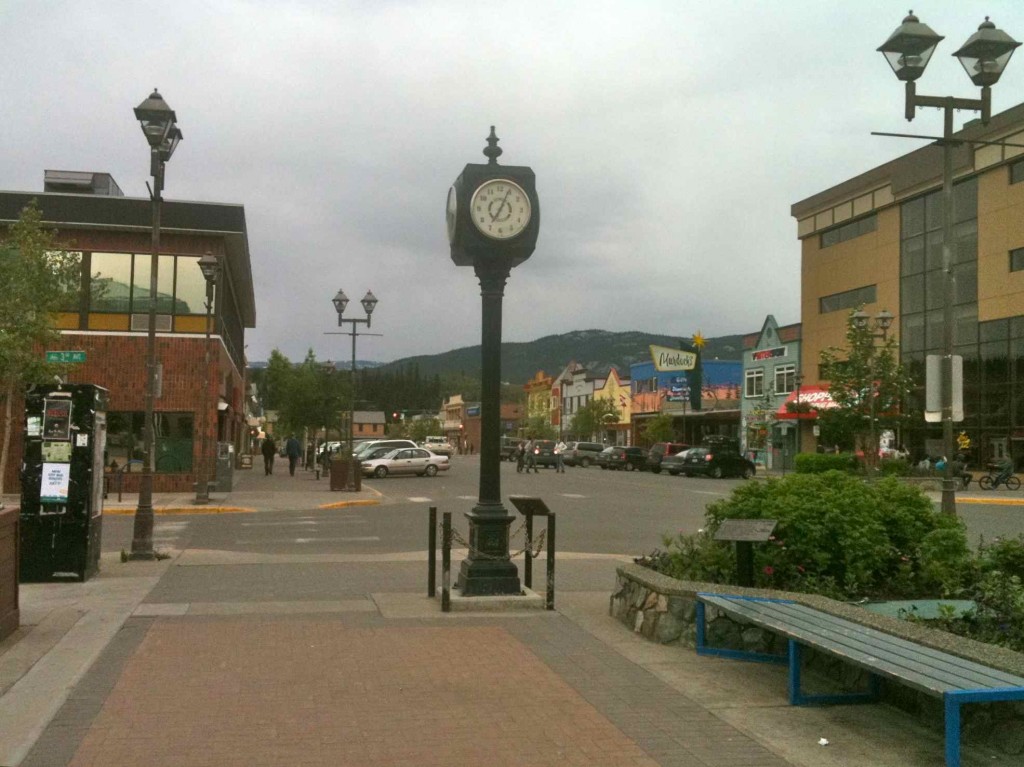
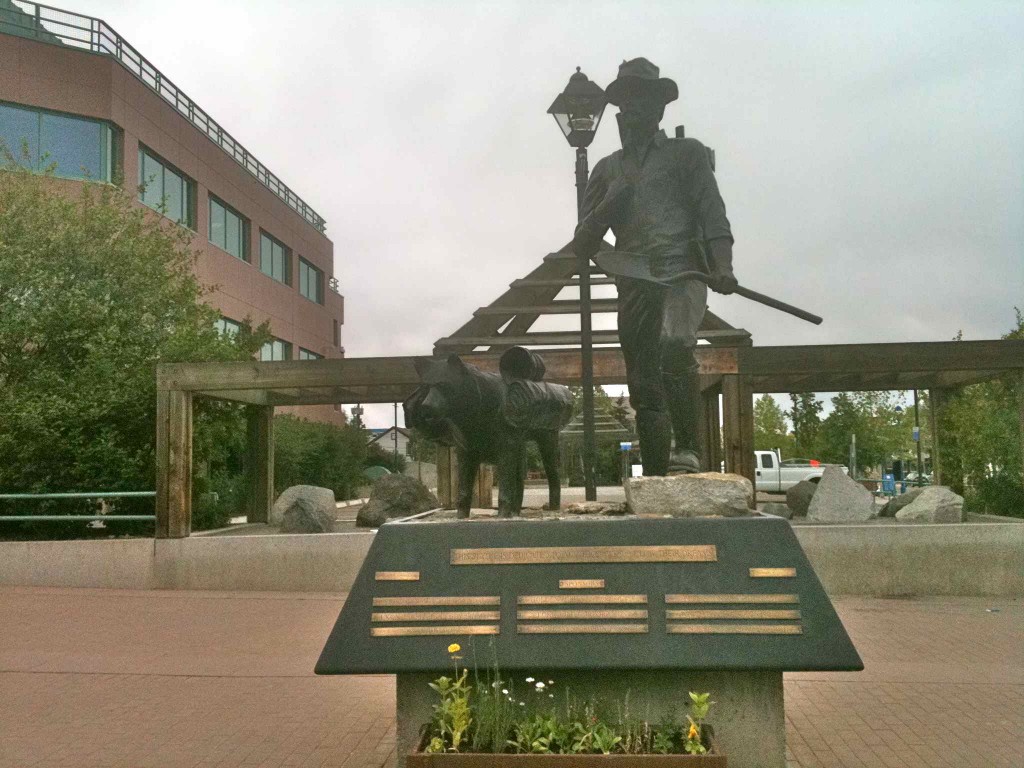
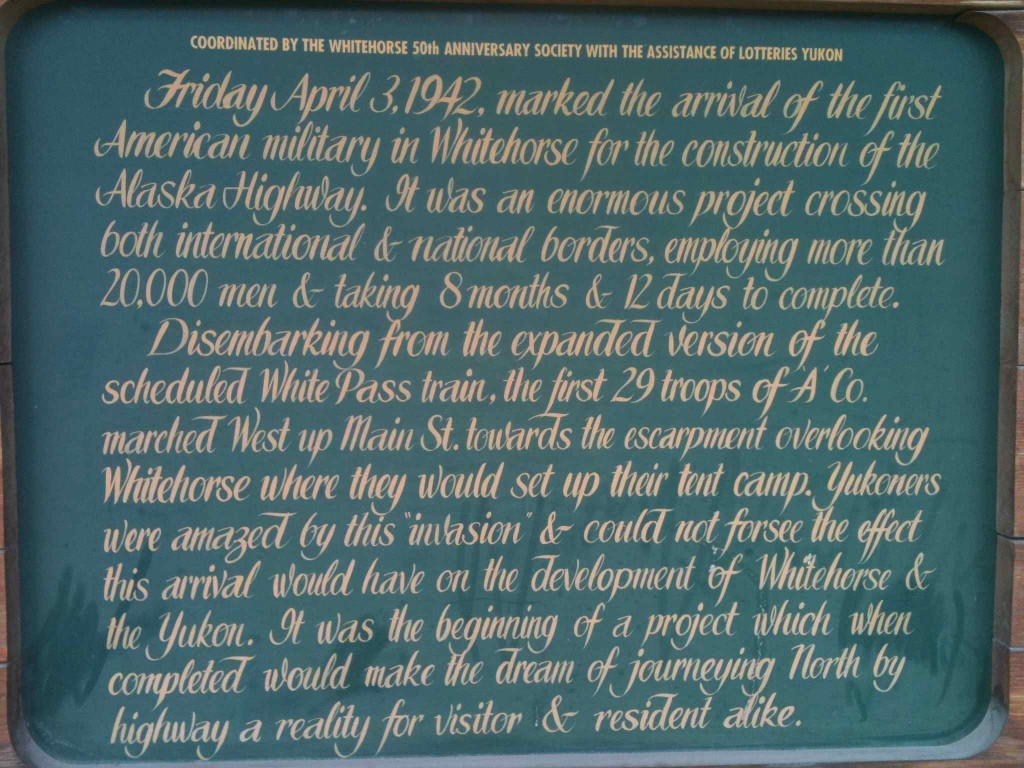
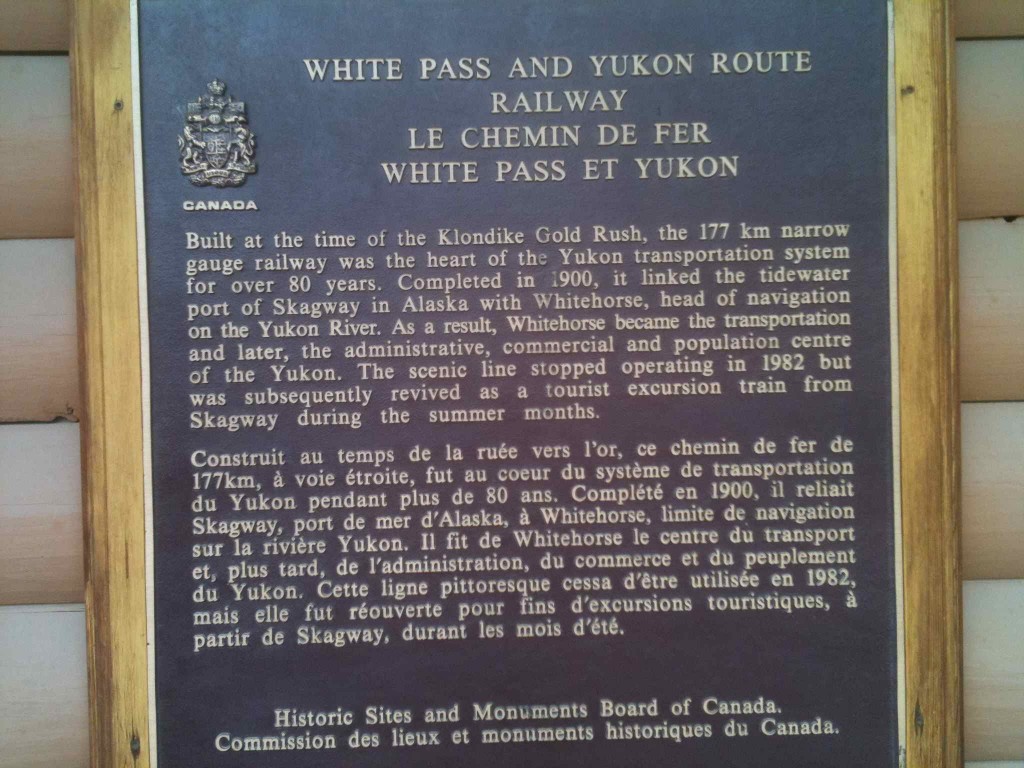
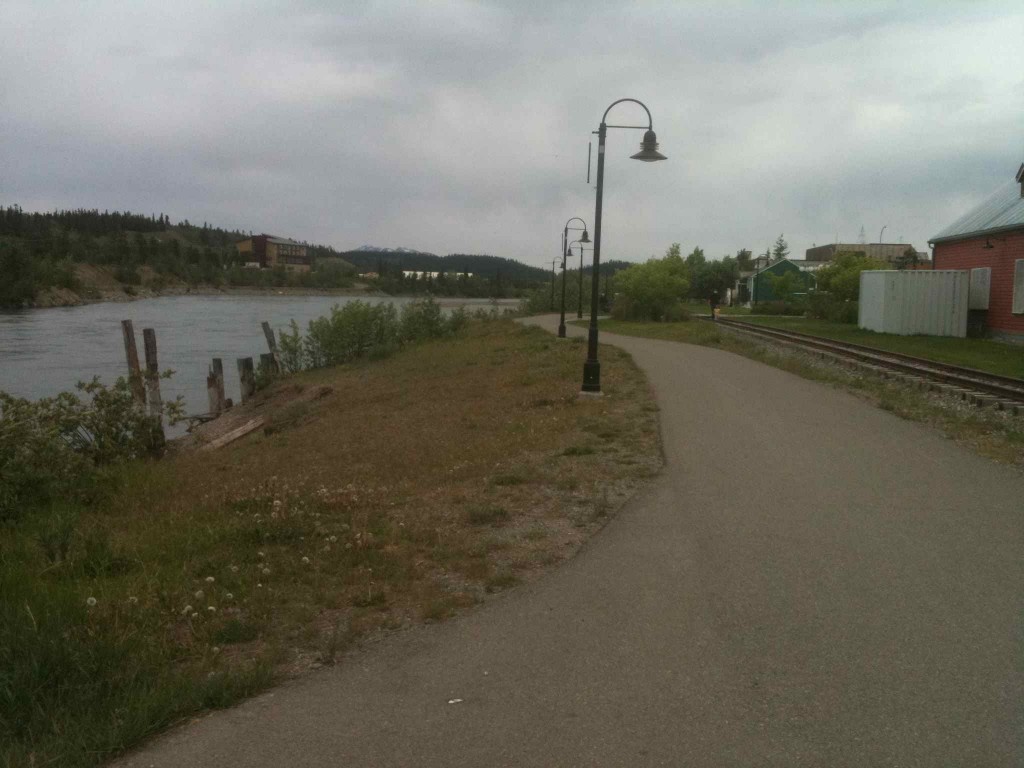


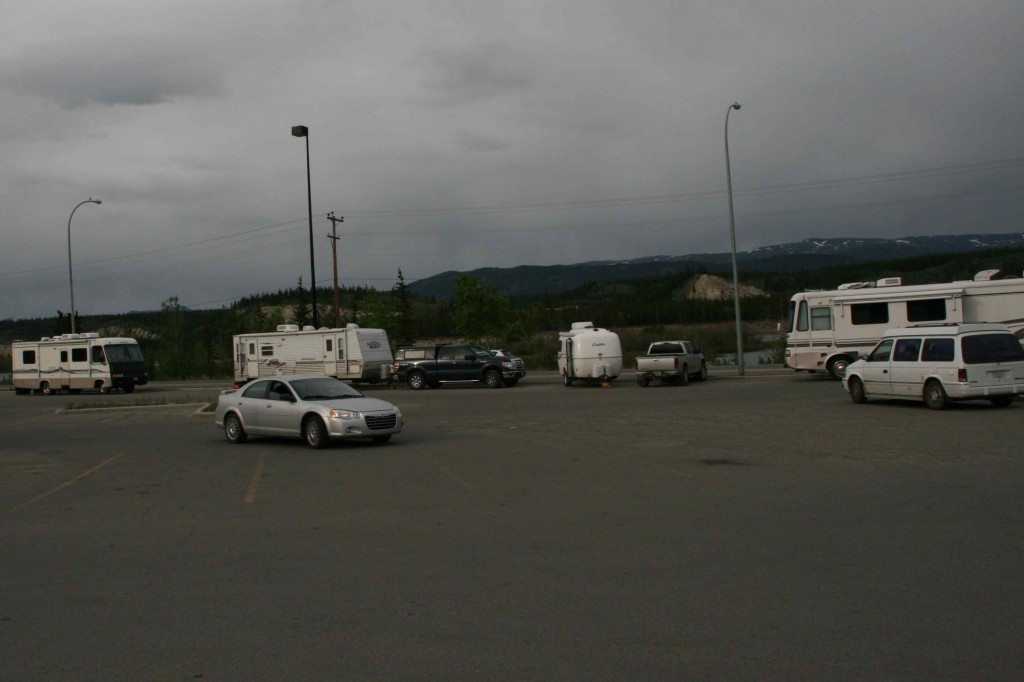

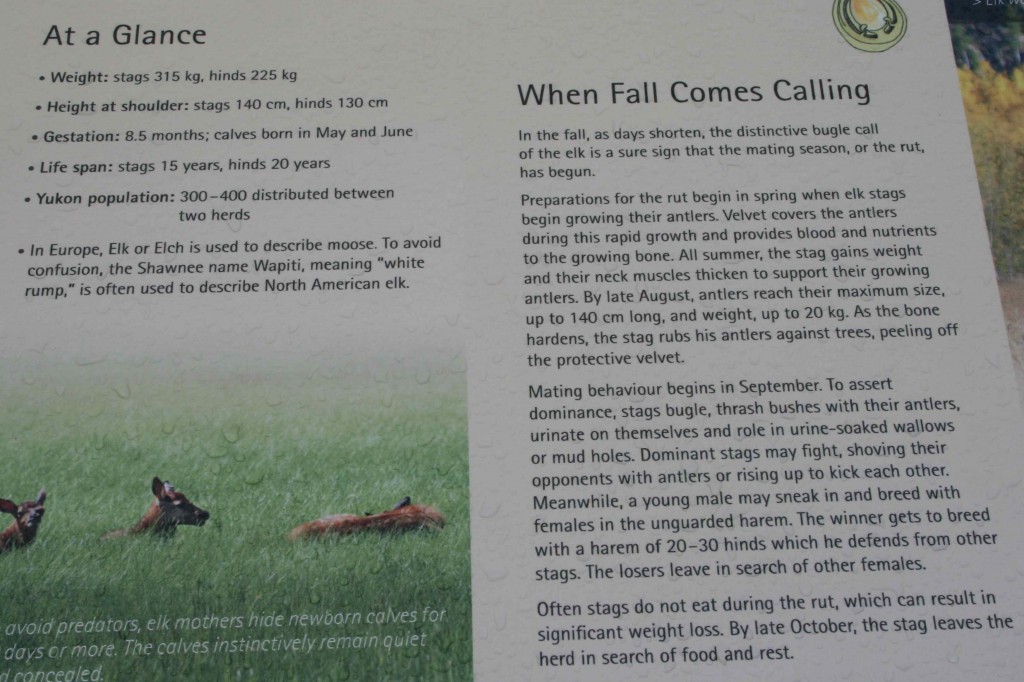
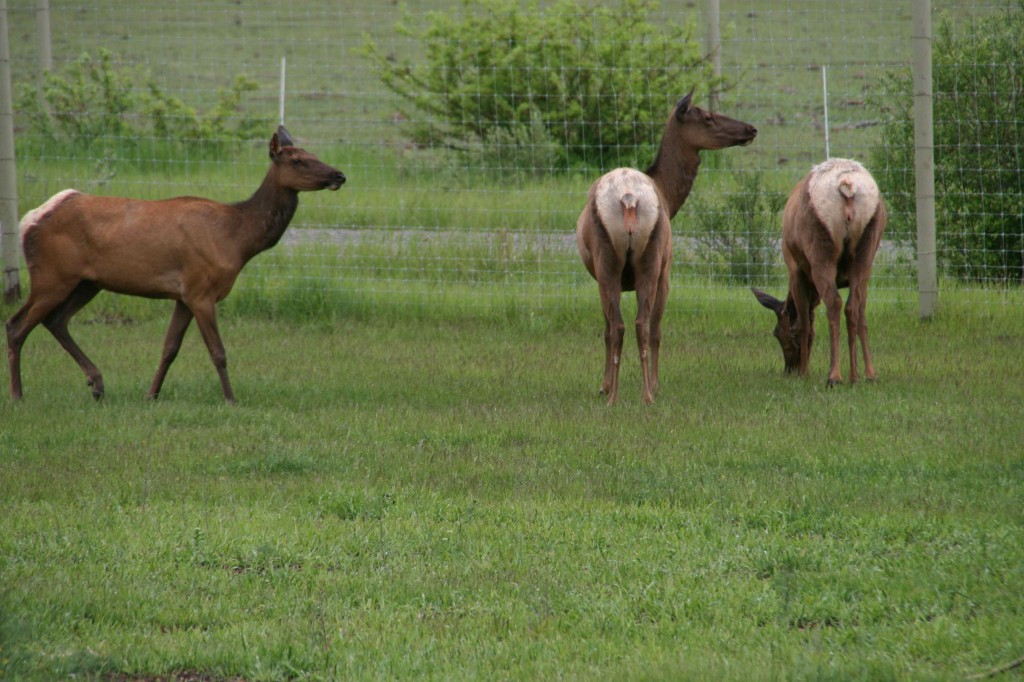
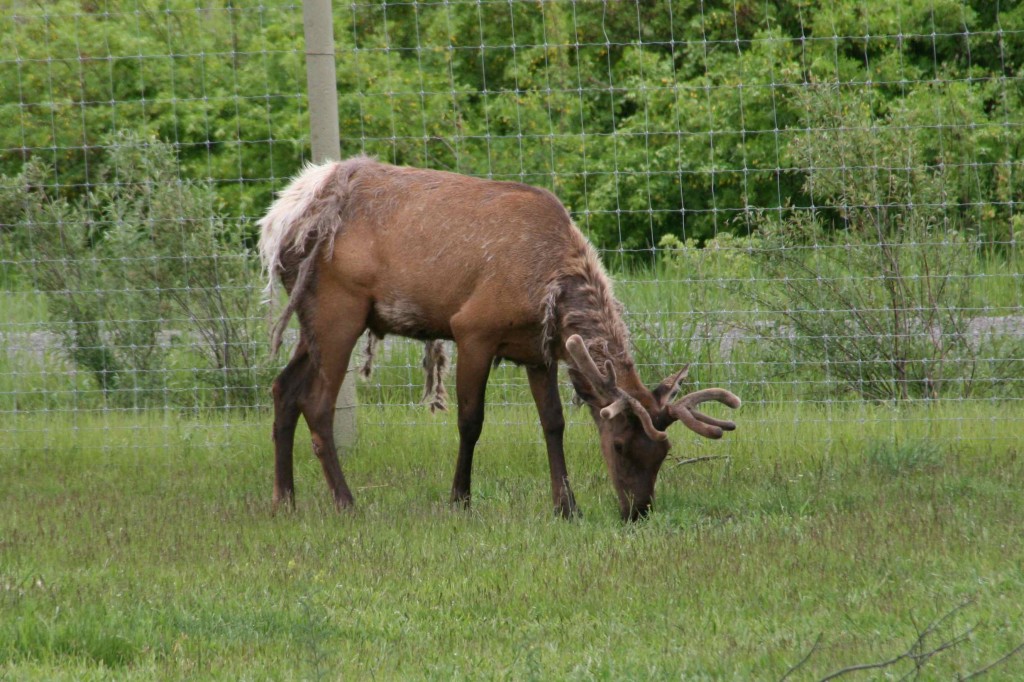
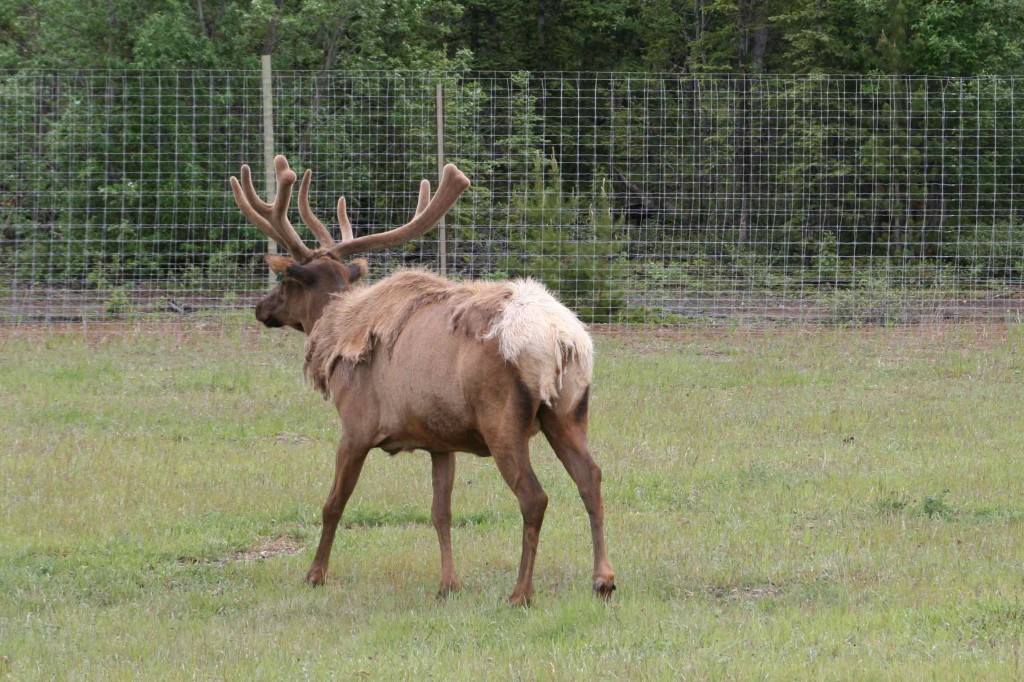

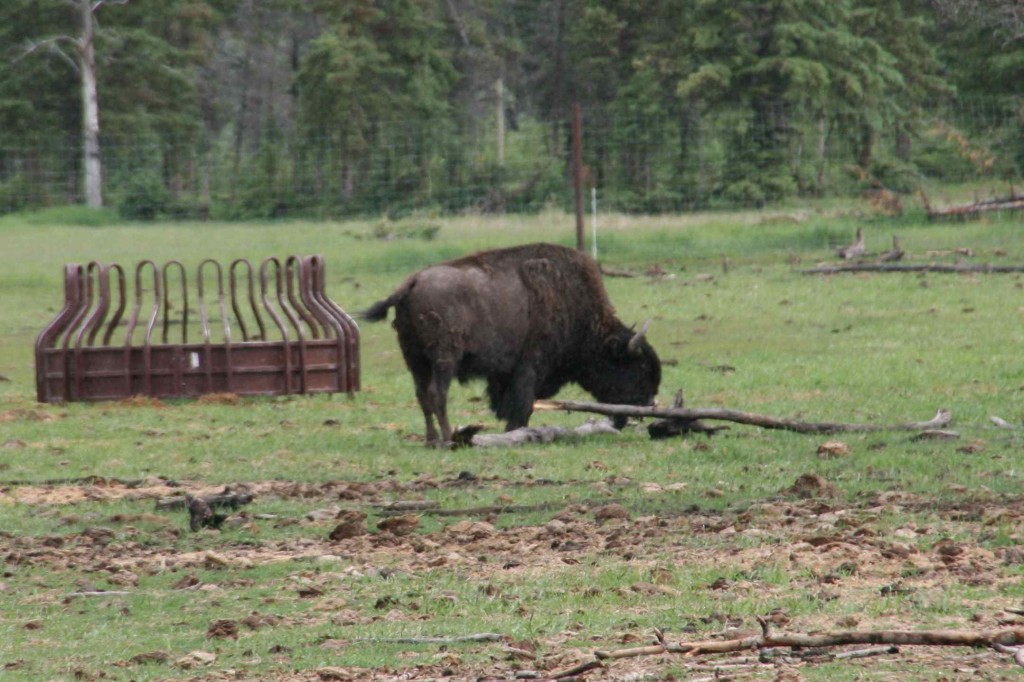

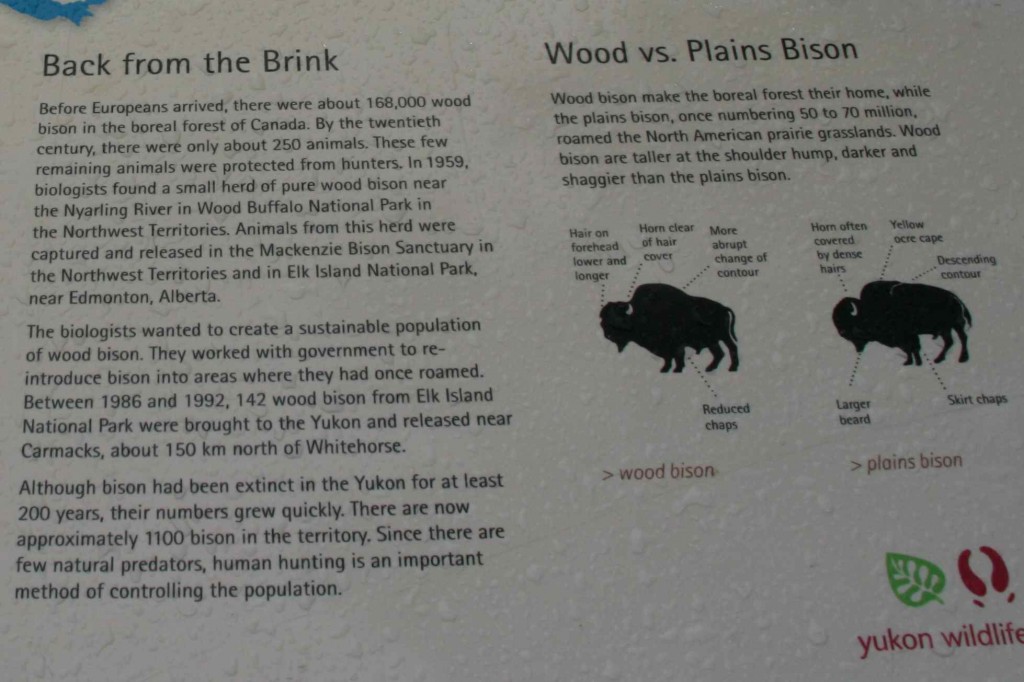



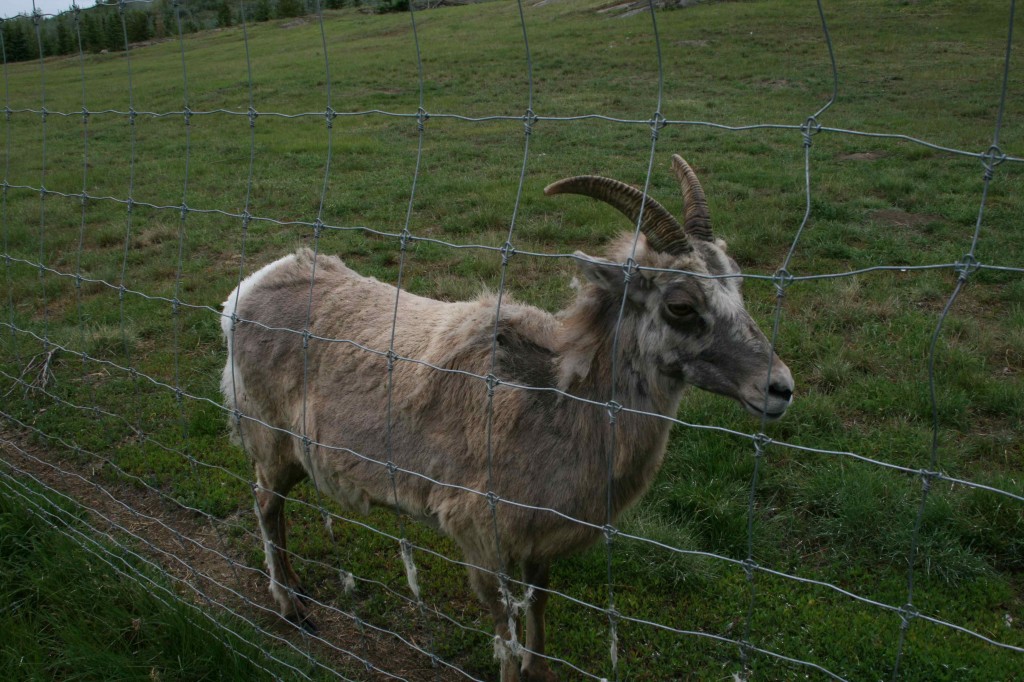
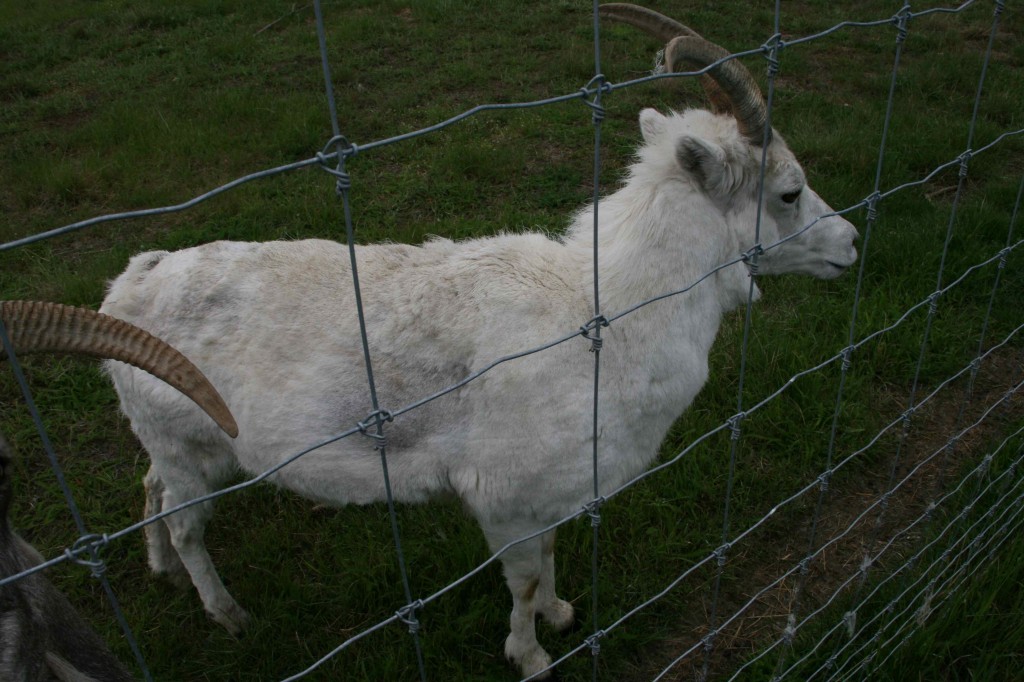
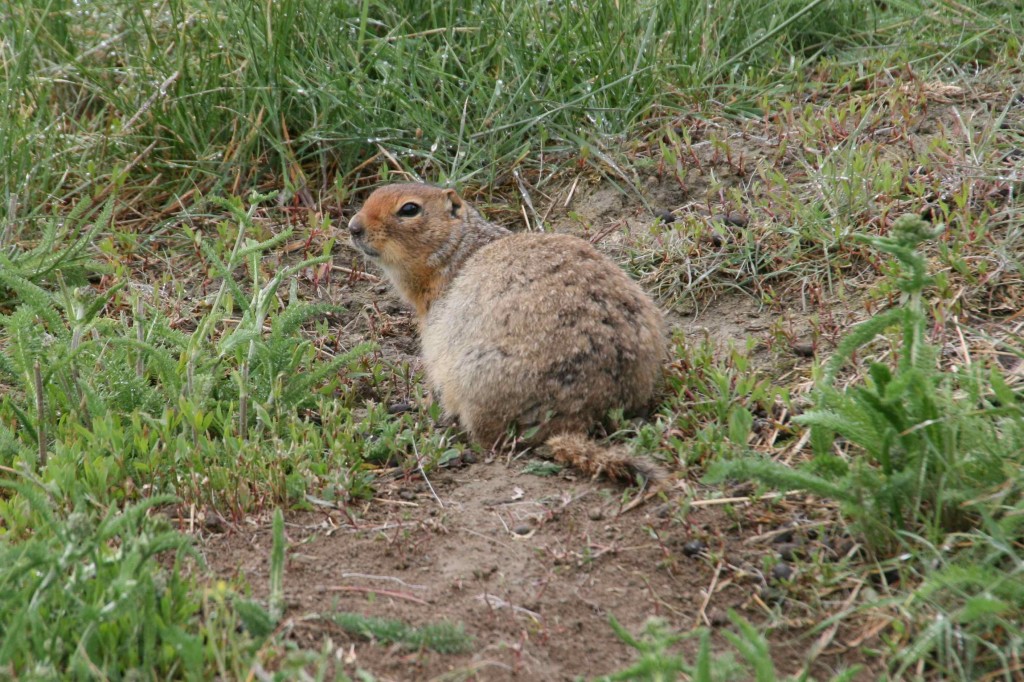
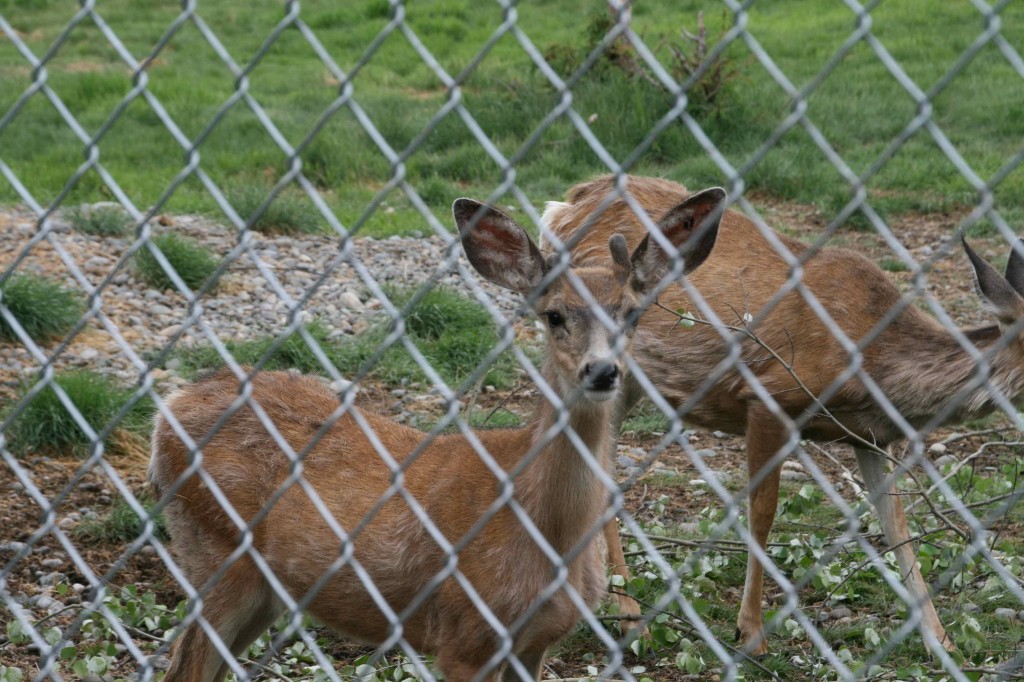
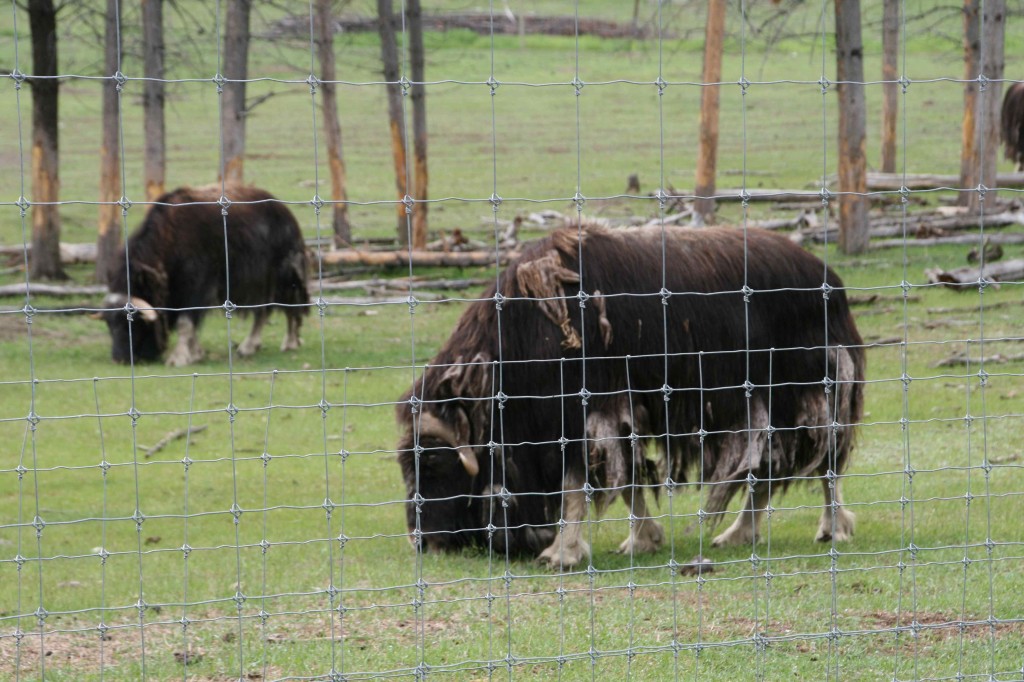
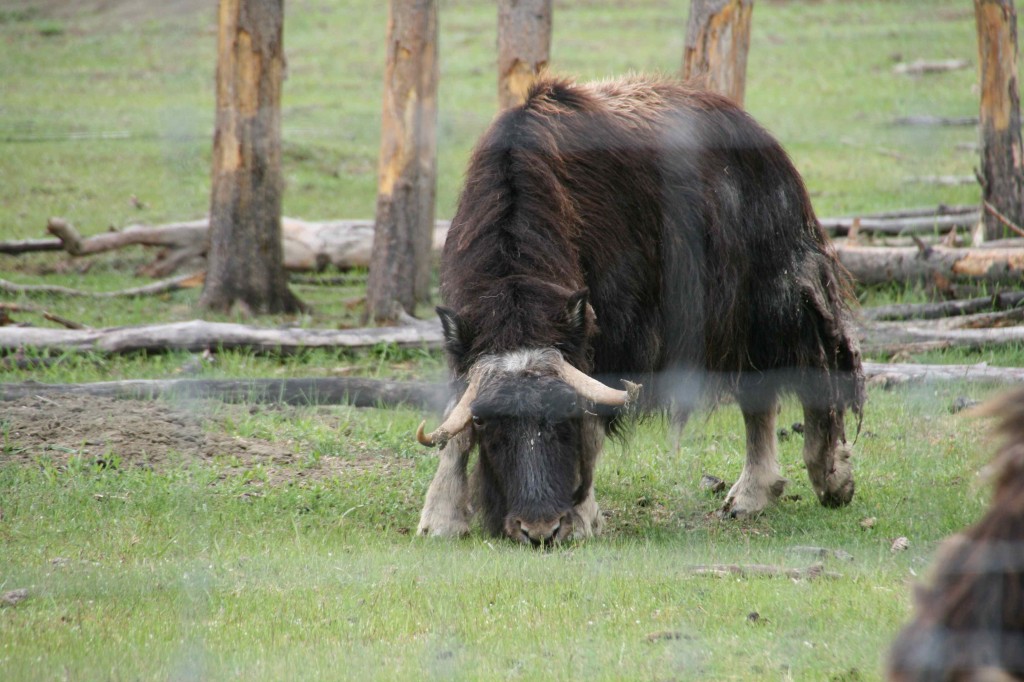
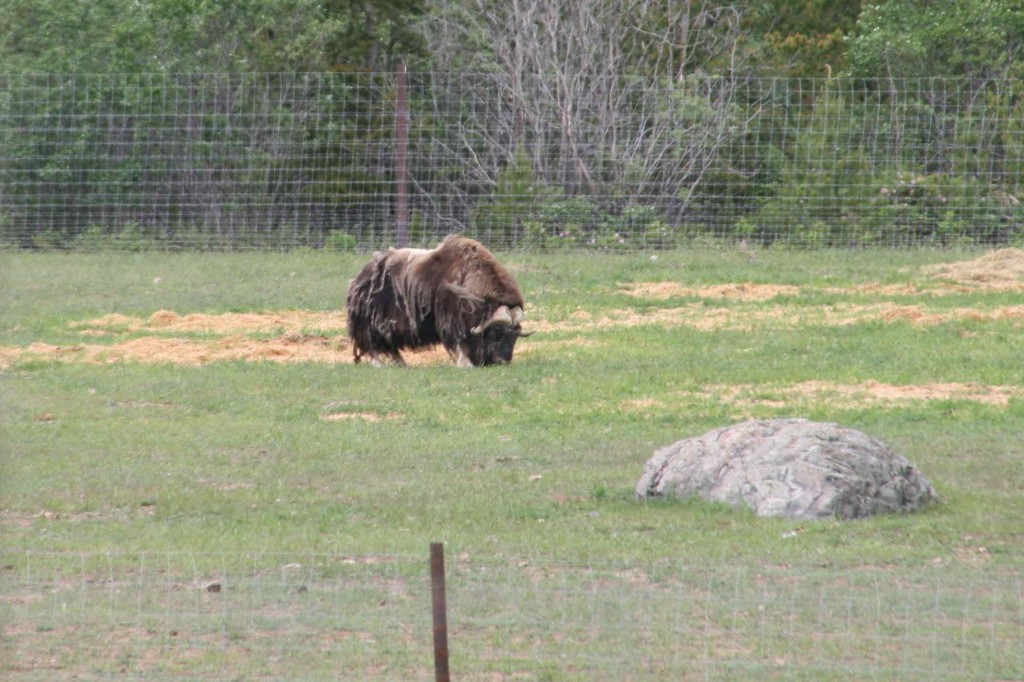
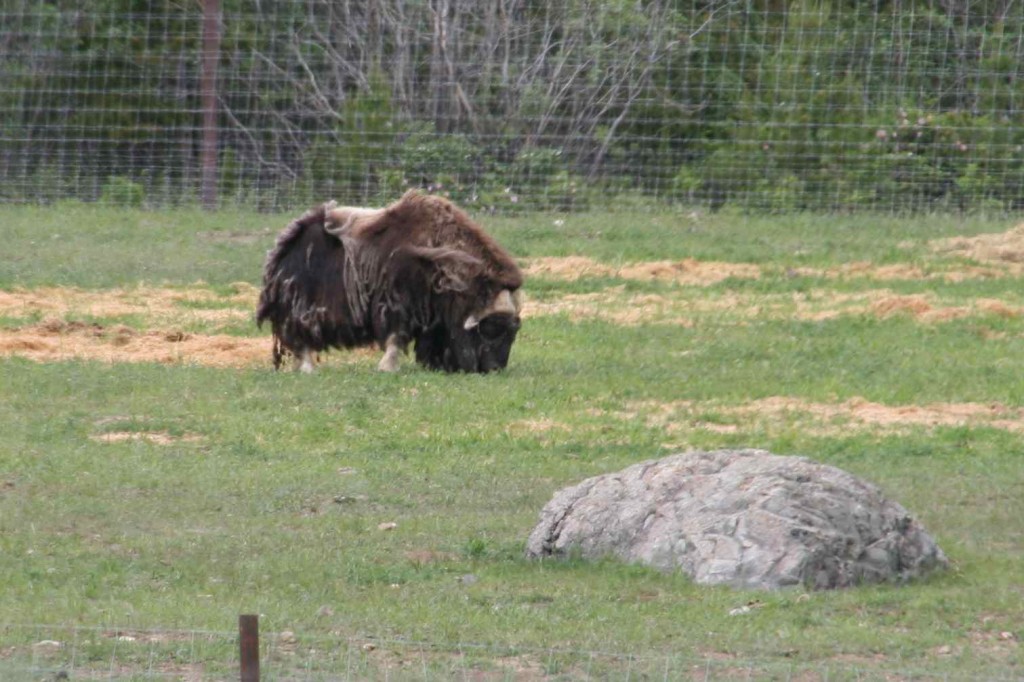

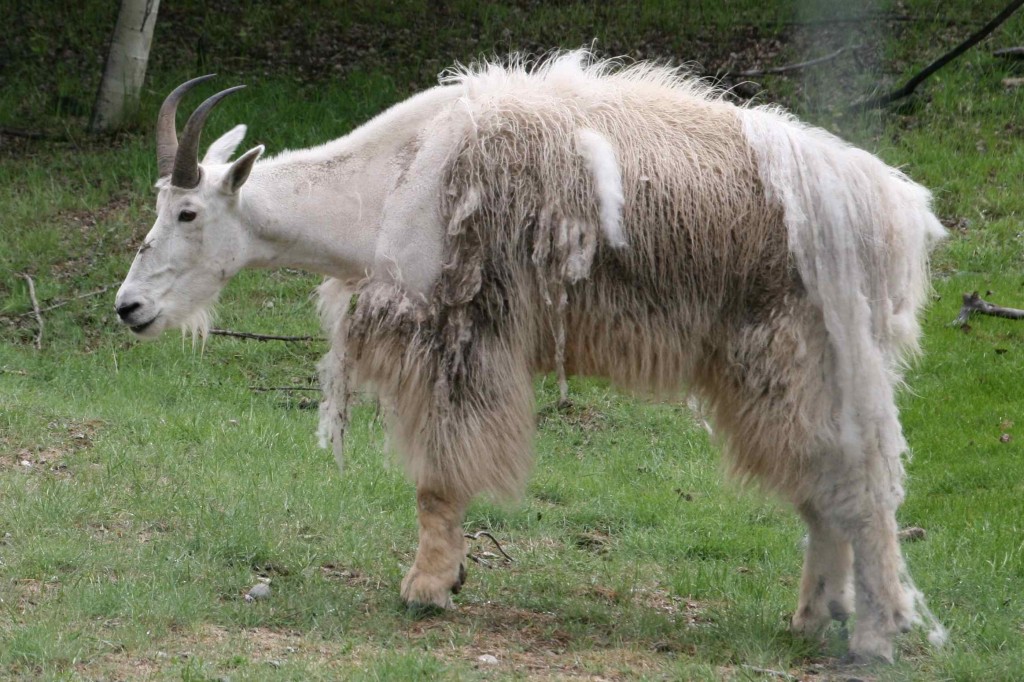
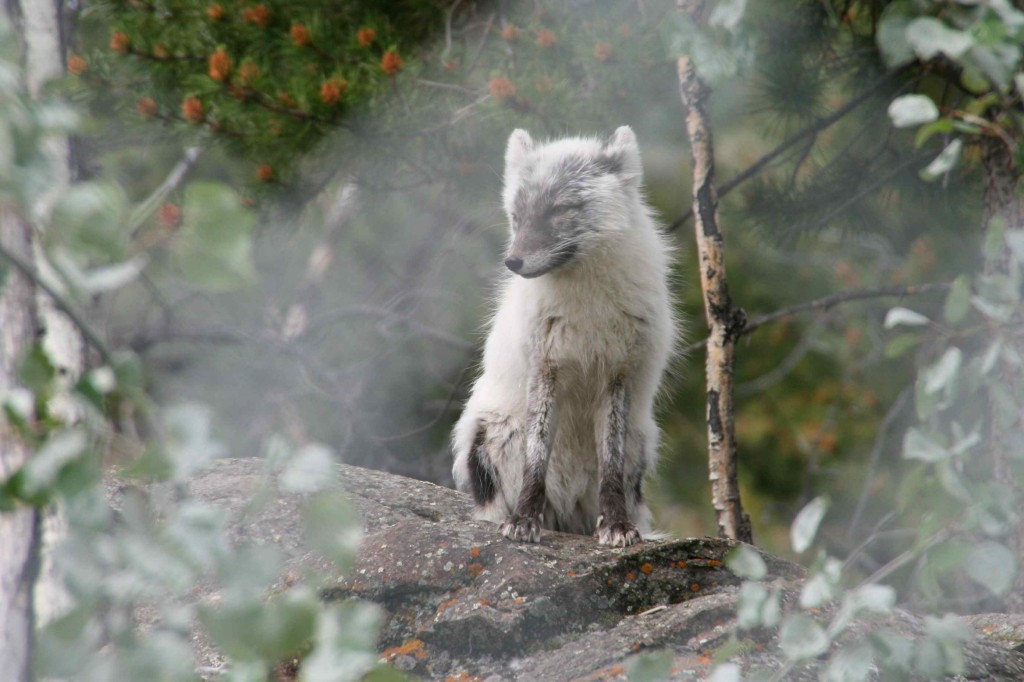
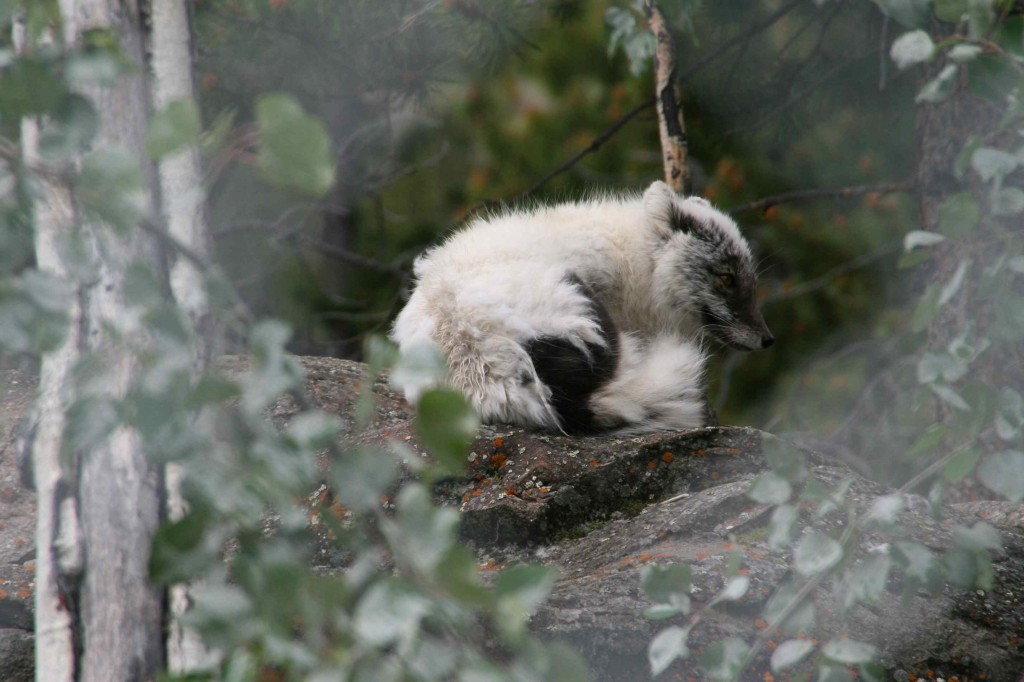

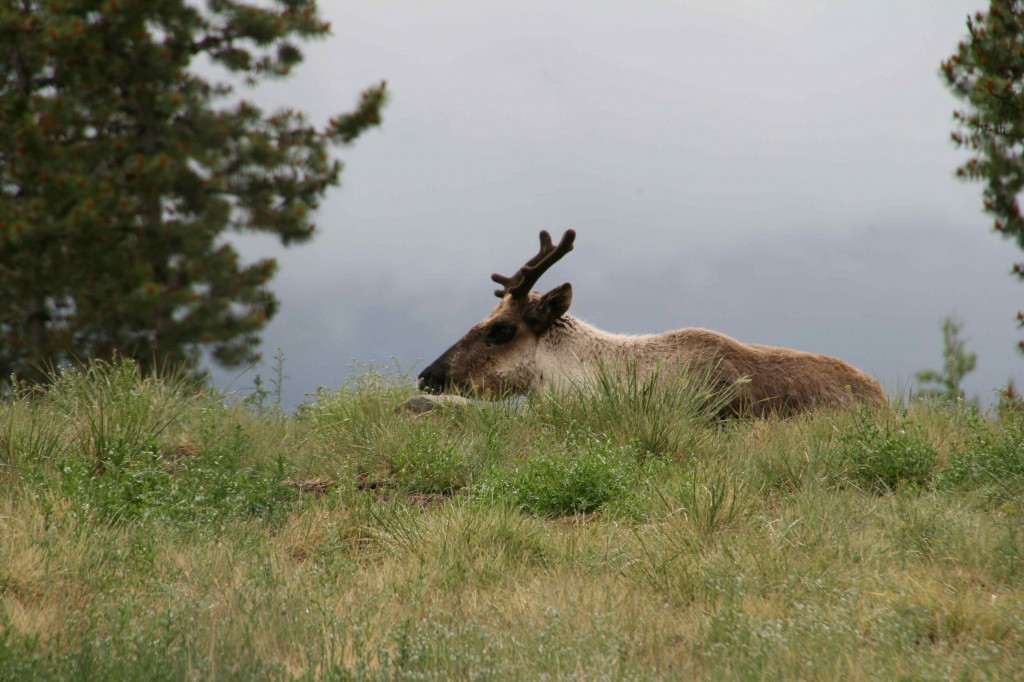
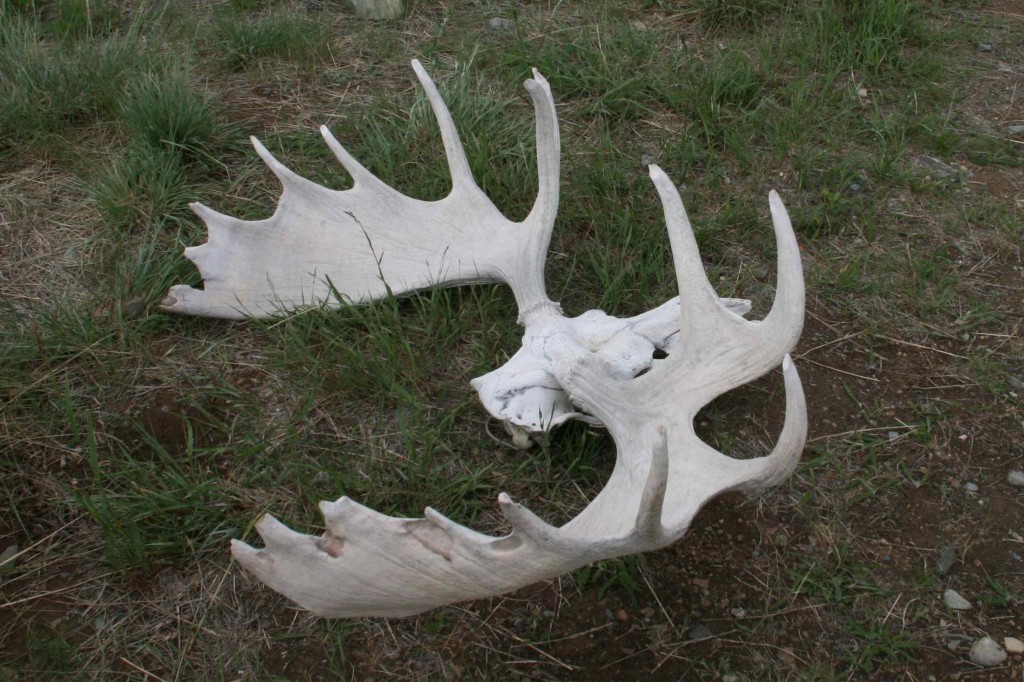
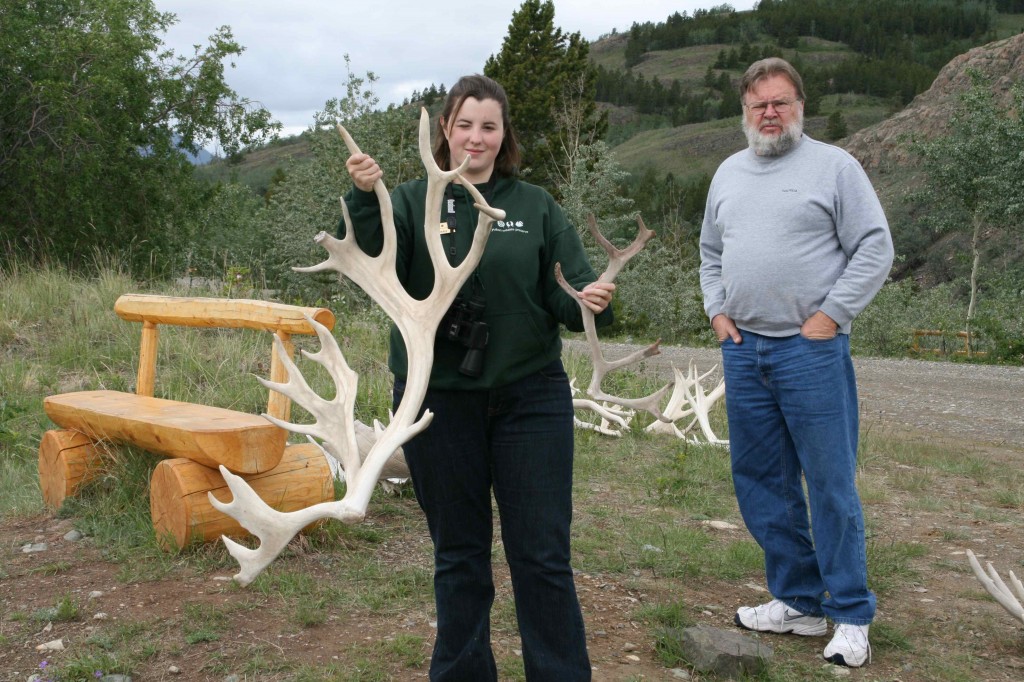

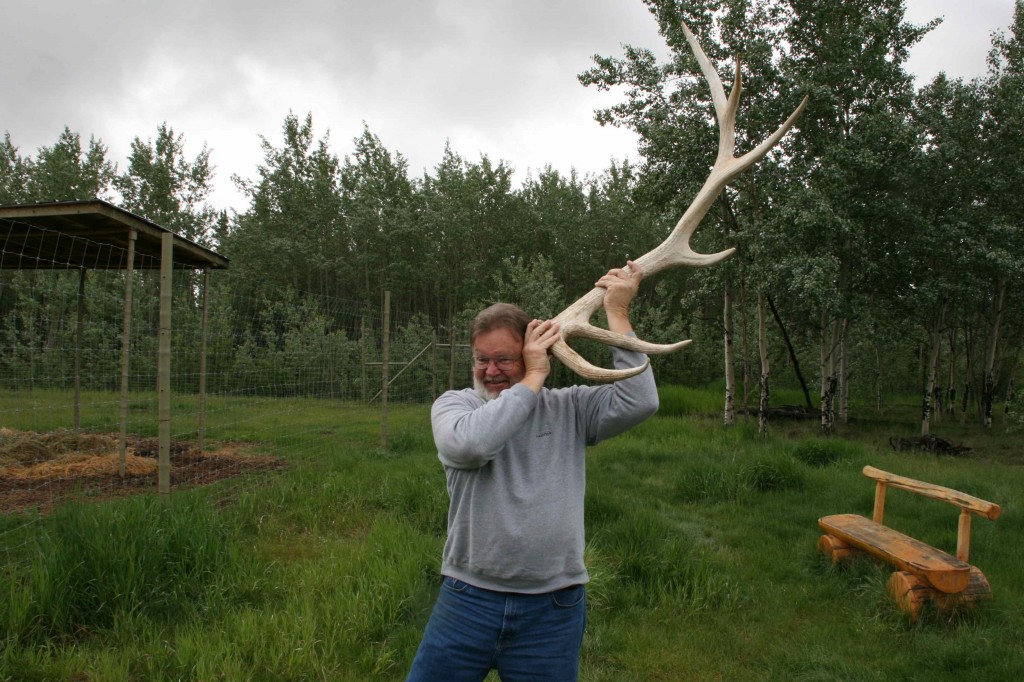
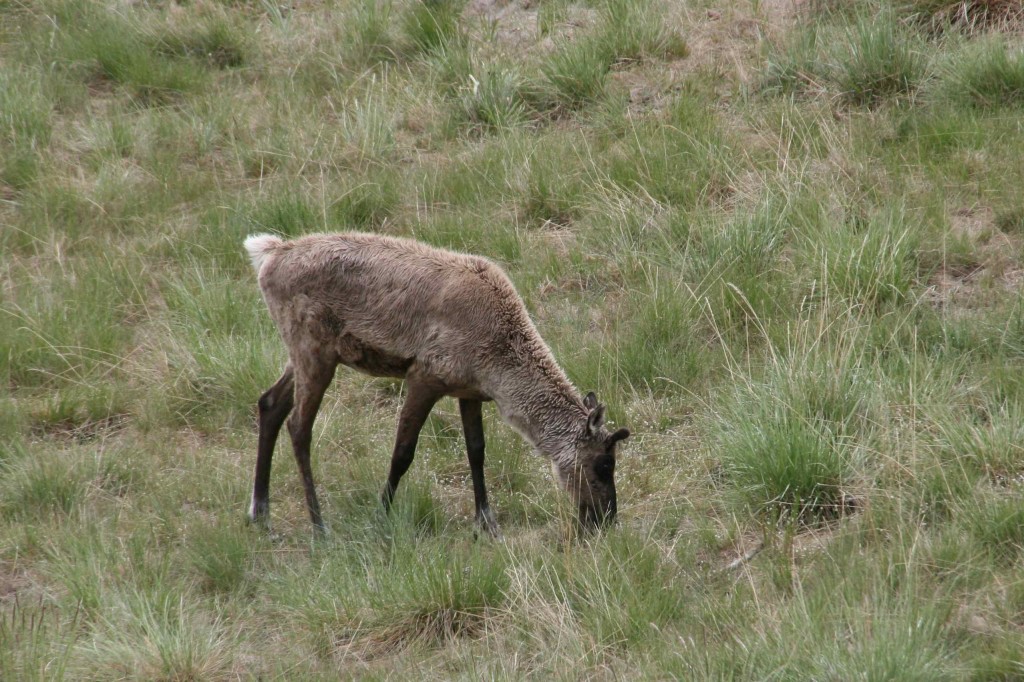


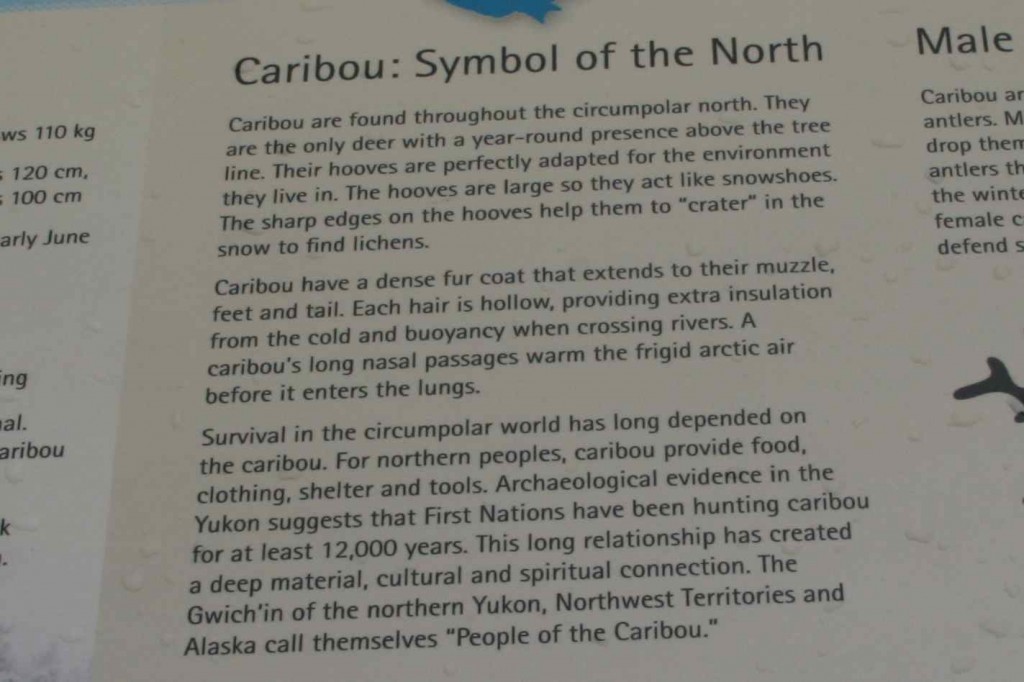


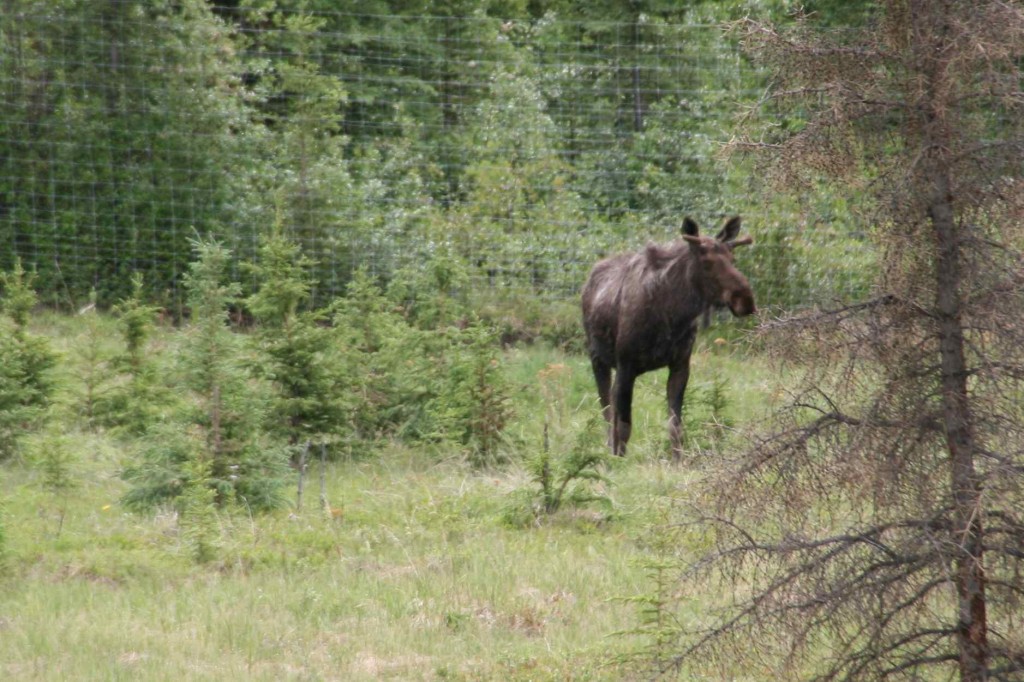



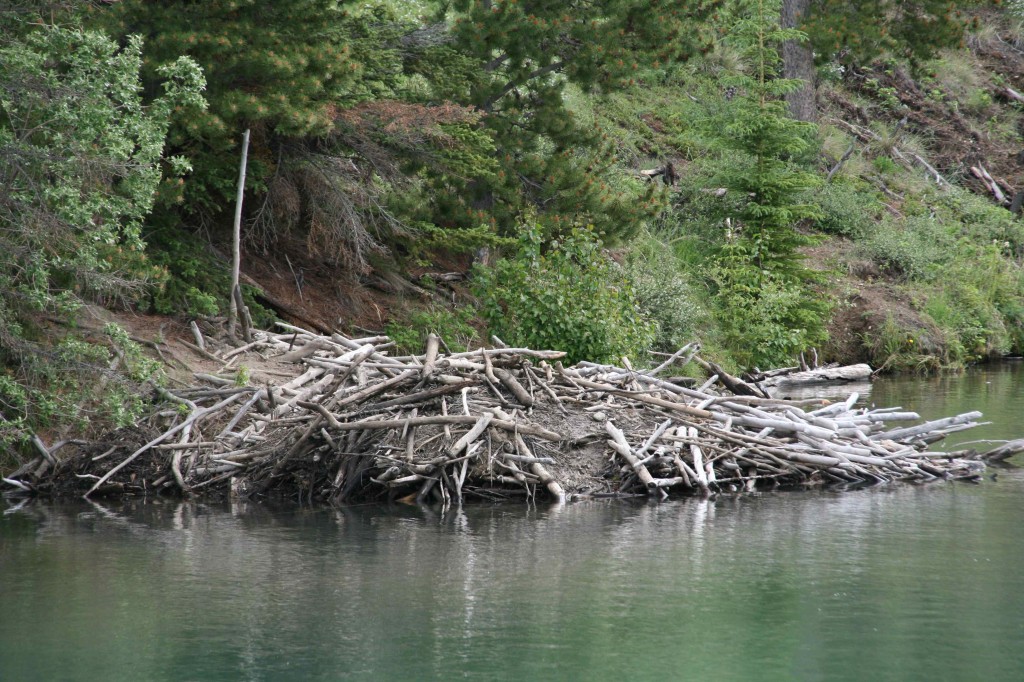

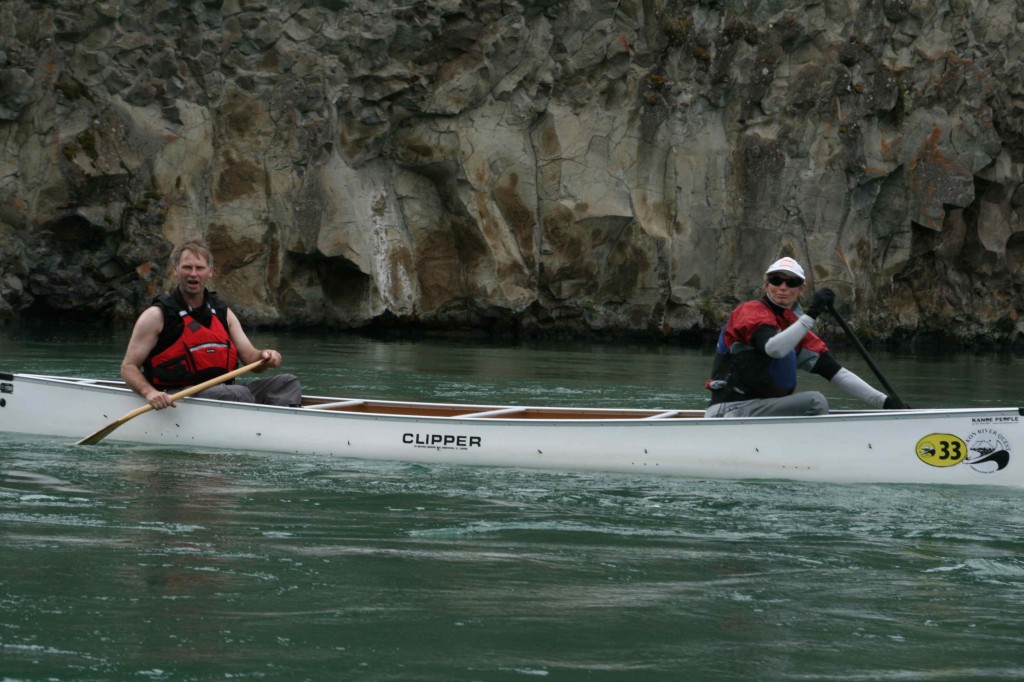

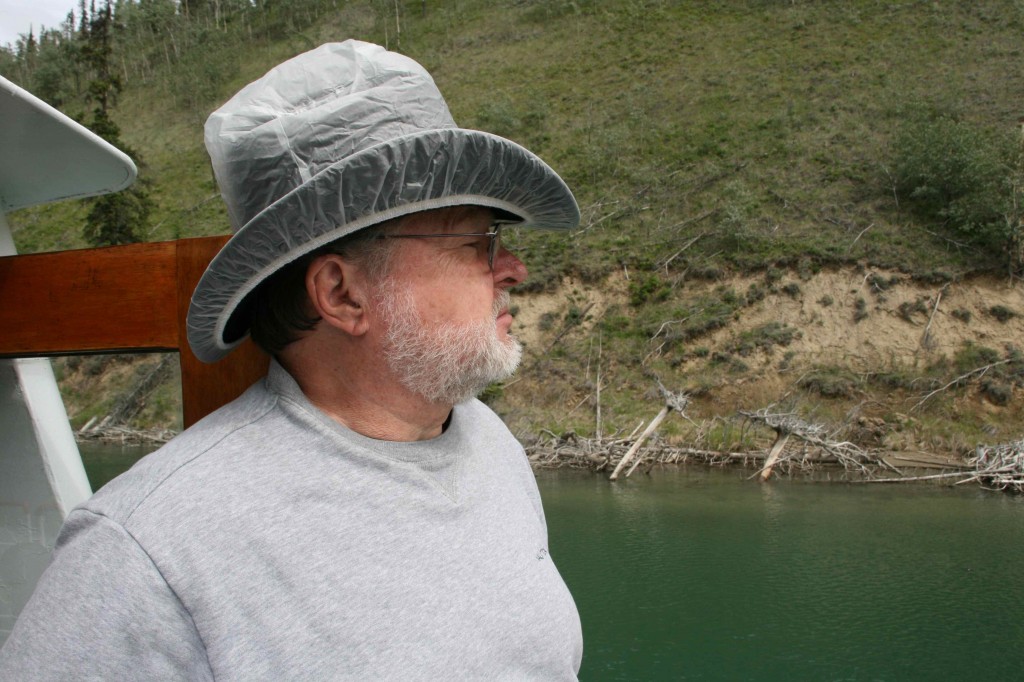
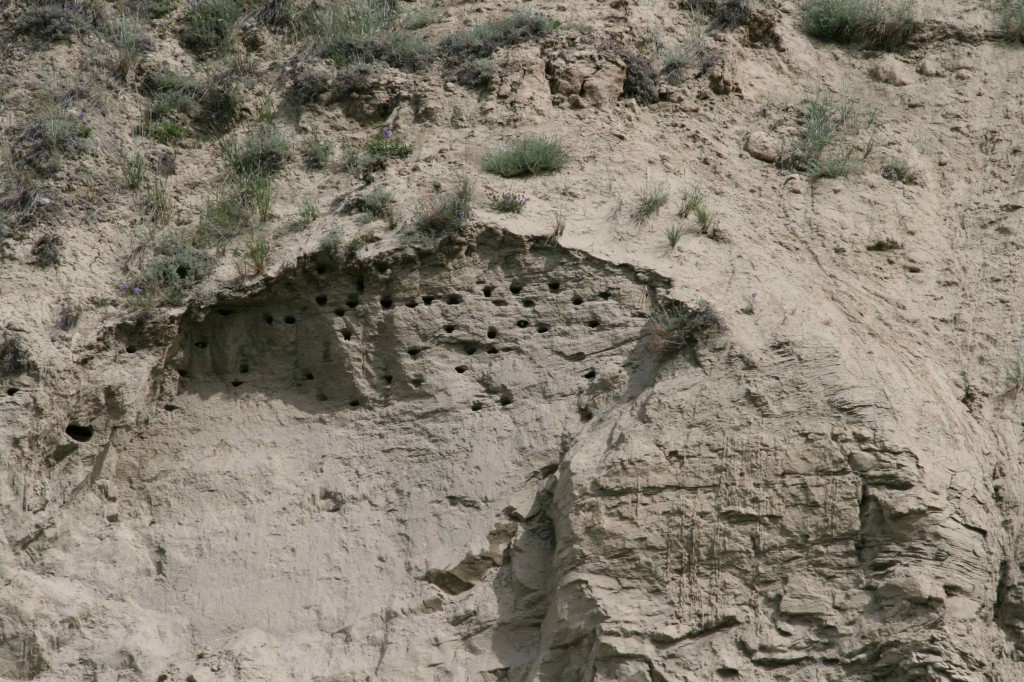
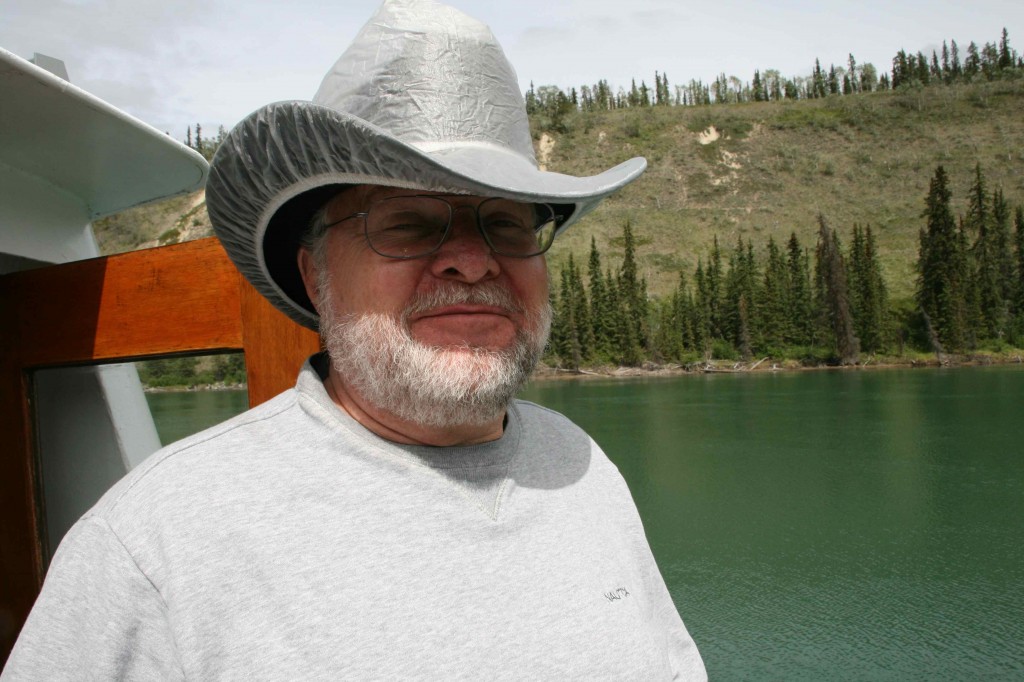
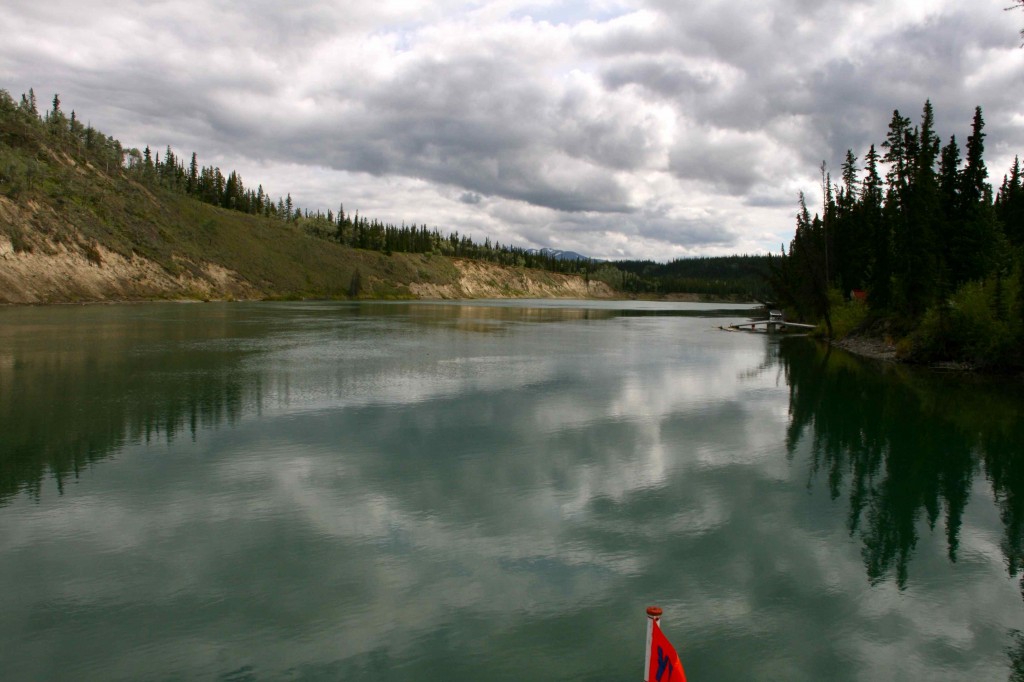
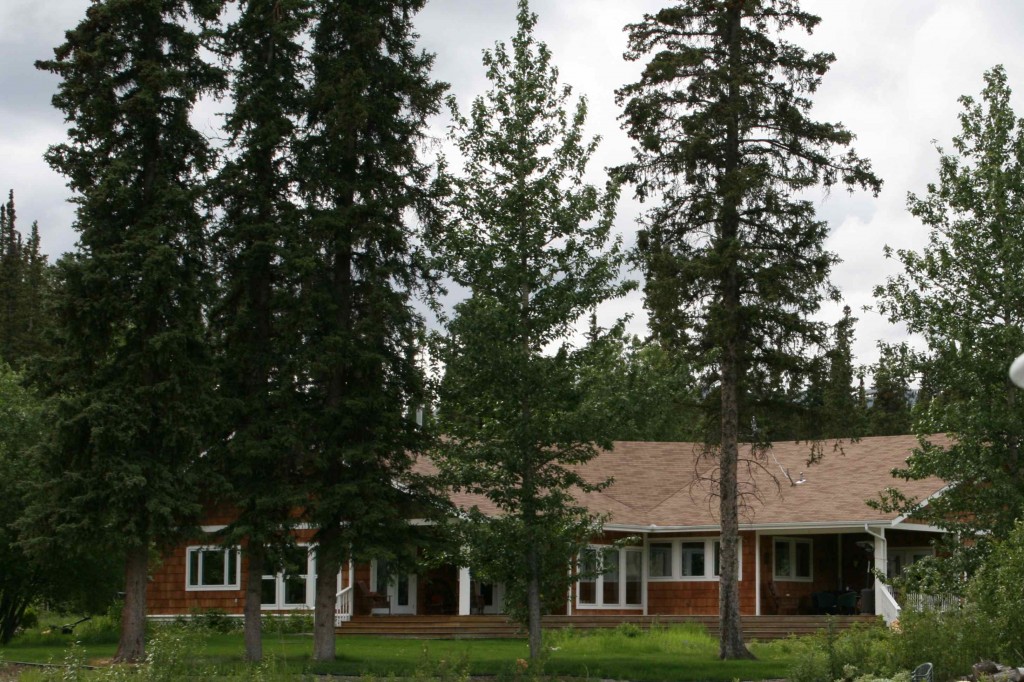
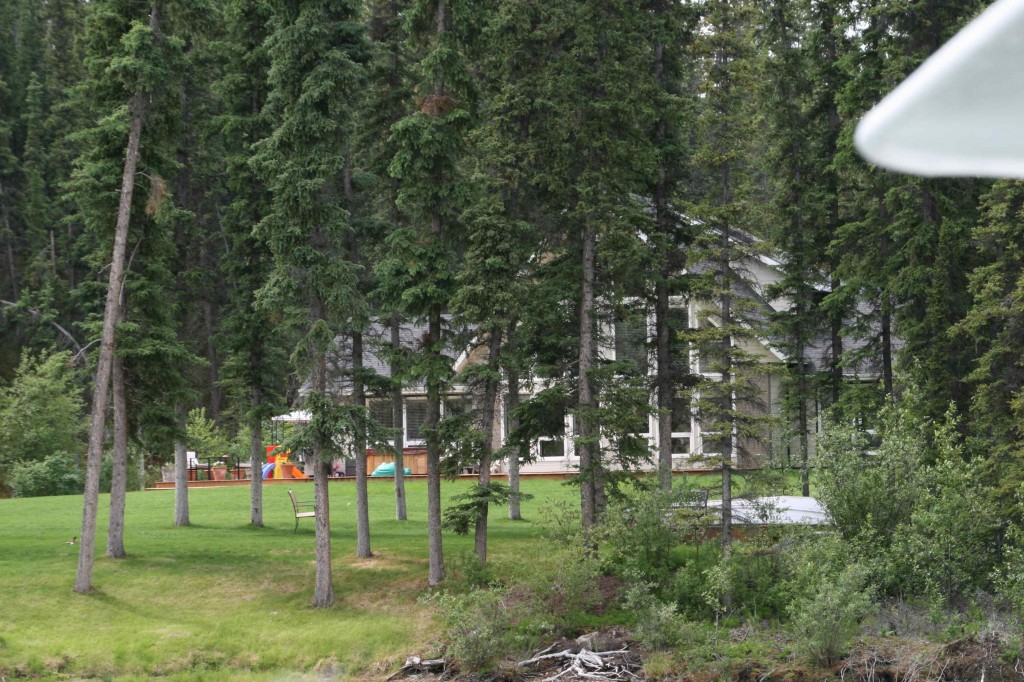
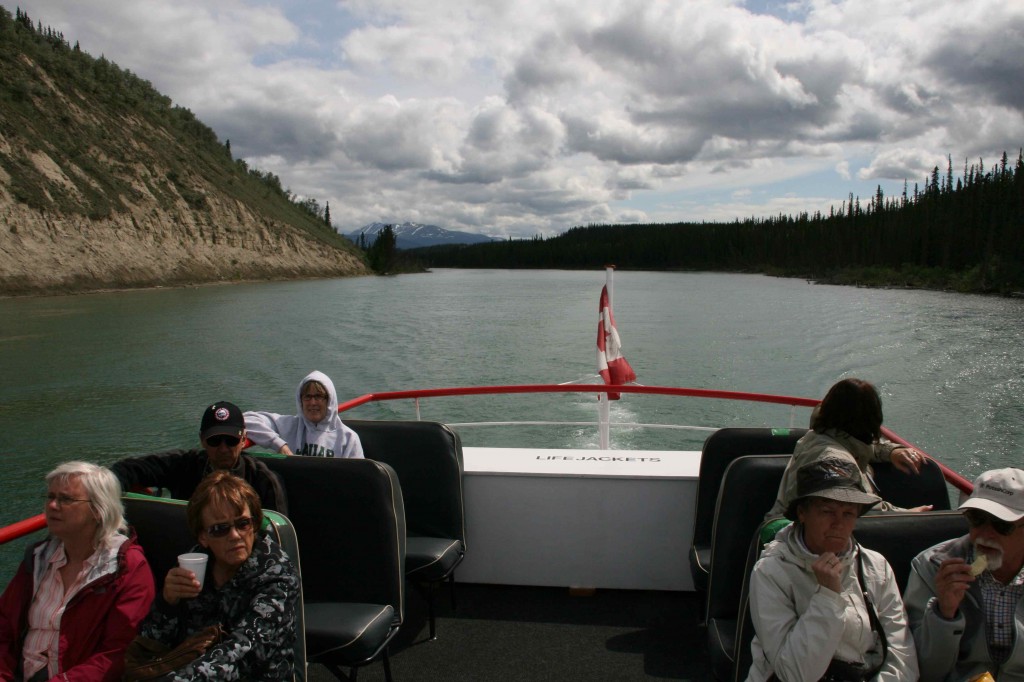
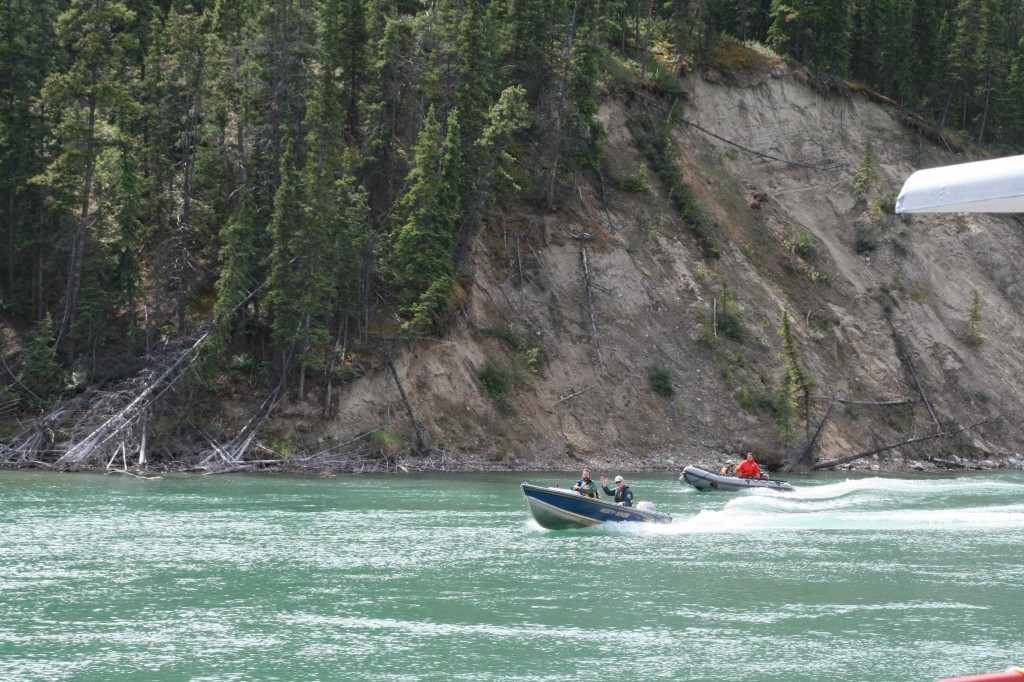
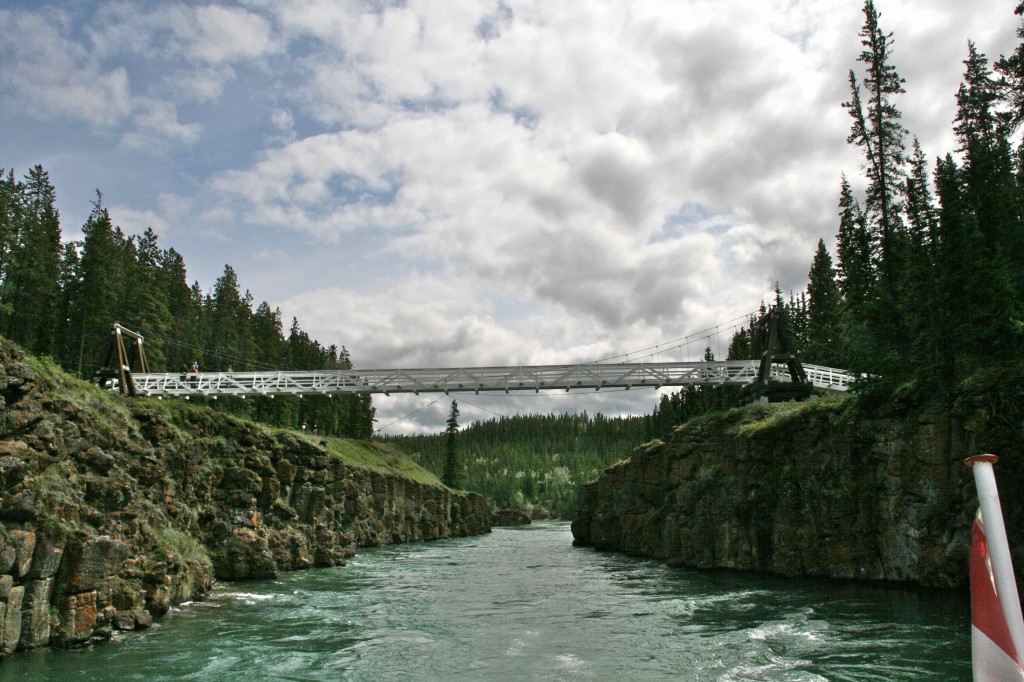
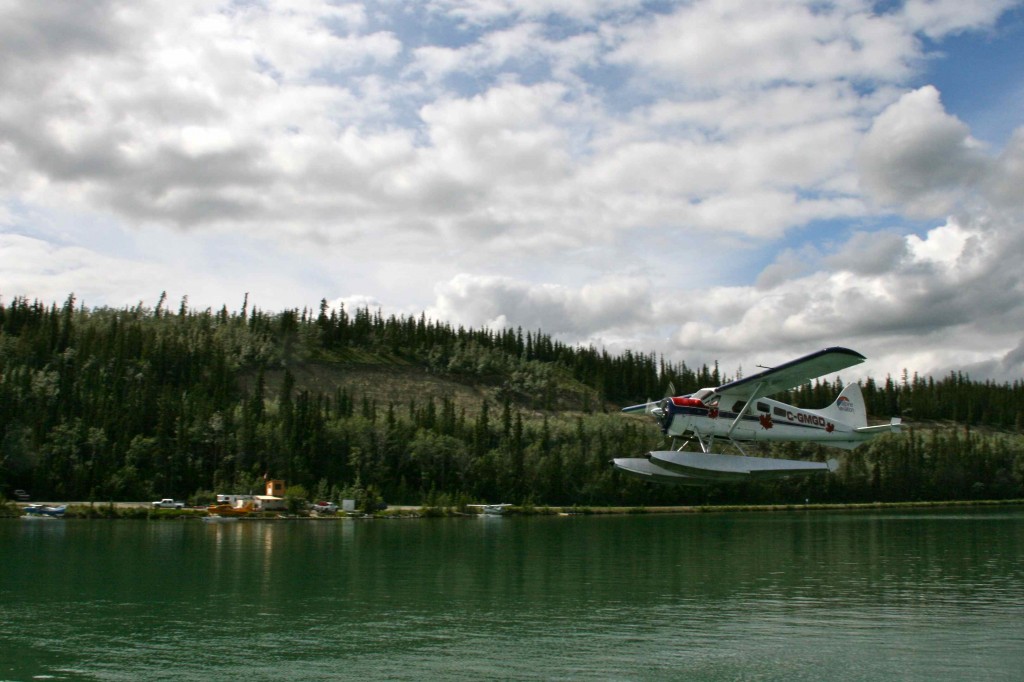
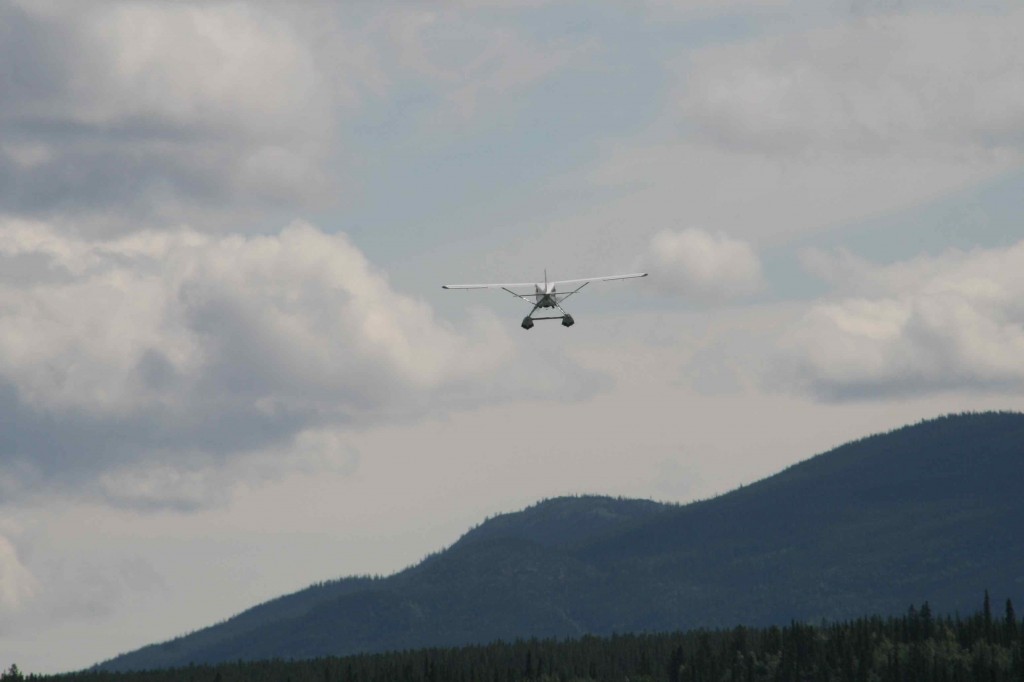
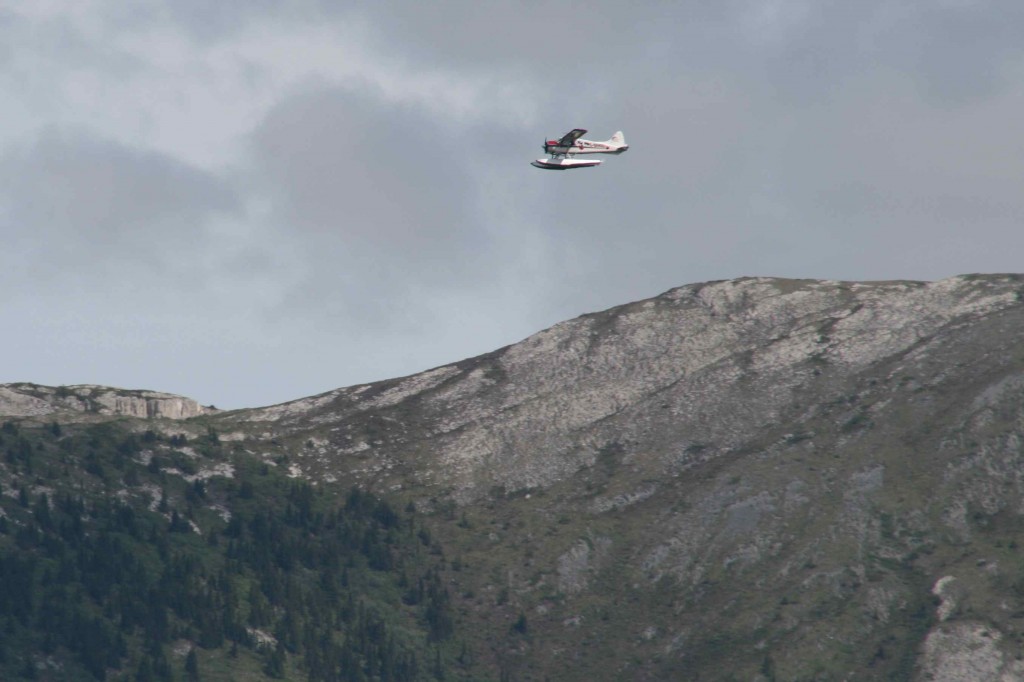
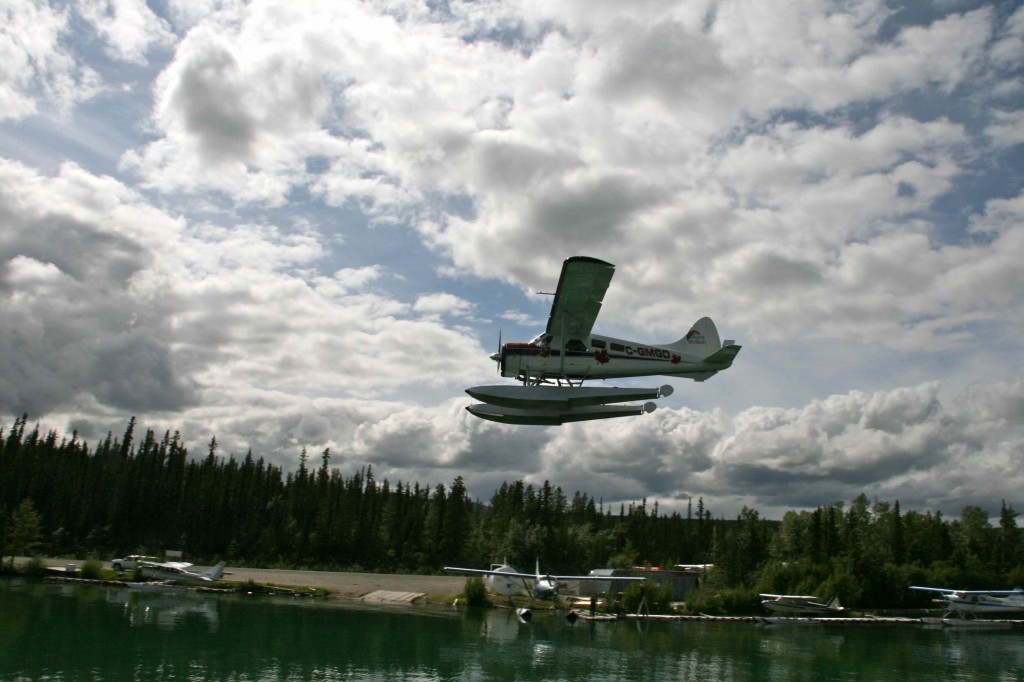
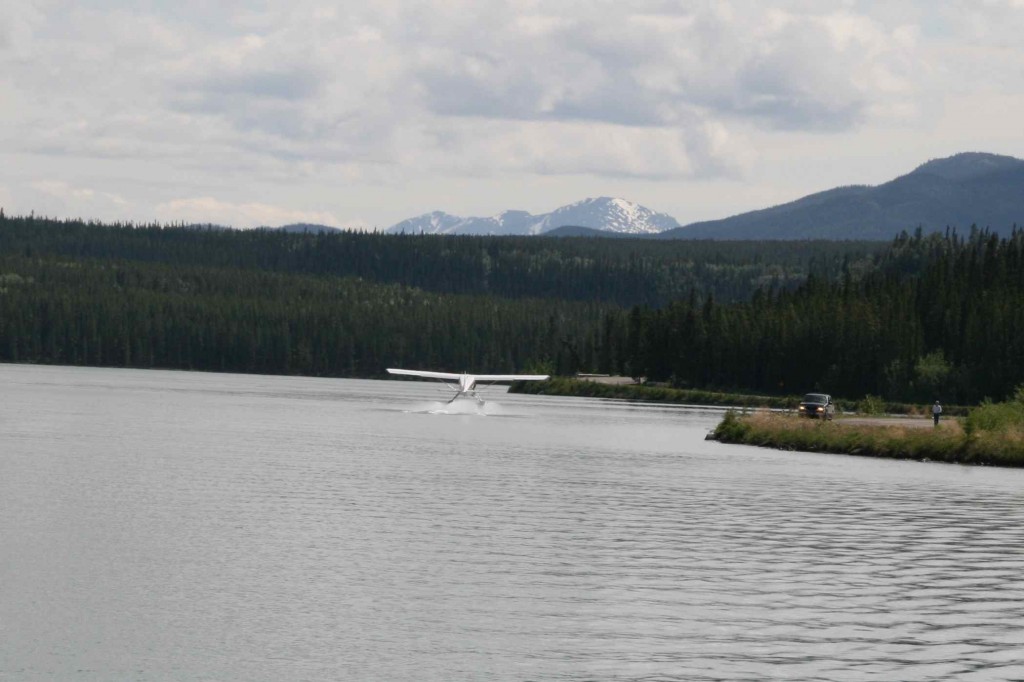
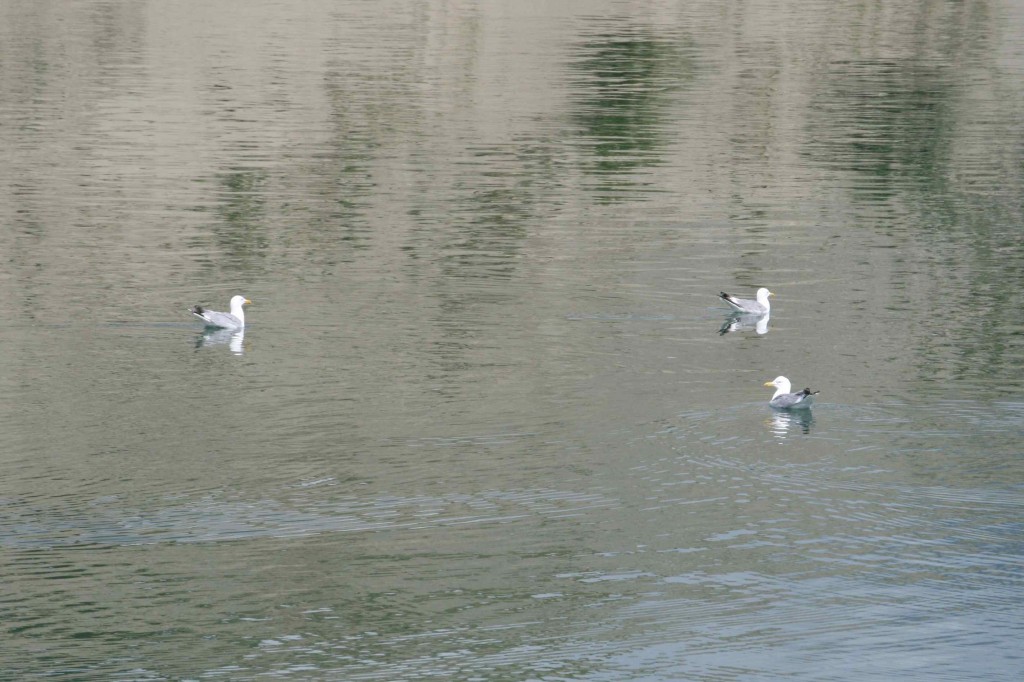
Sure would like some of that weather it’s 115 today July 1st monsoon supposed to kick in Monday then it will be hot and swampy great
Actually, we could use a little of that sun. It sure rains a lot up here! The good news is that sometime during the day we usually get a little sun, and we really appreciate the days that are mostly sun!